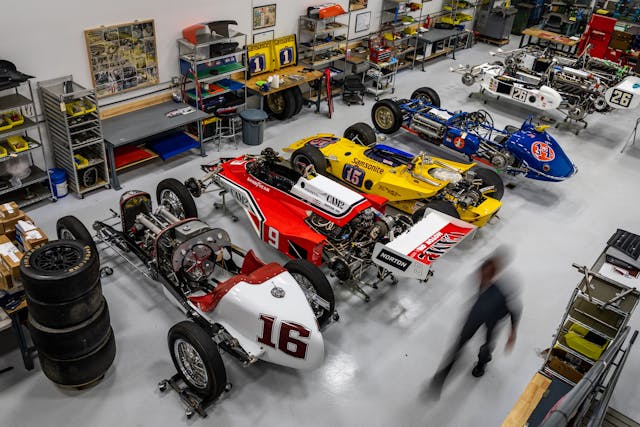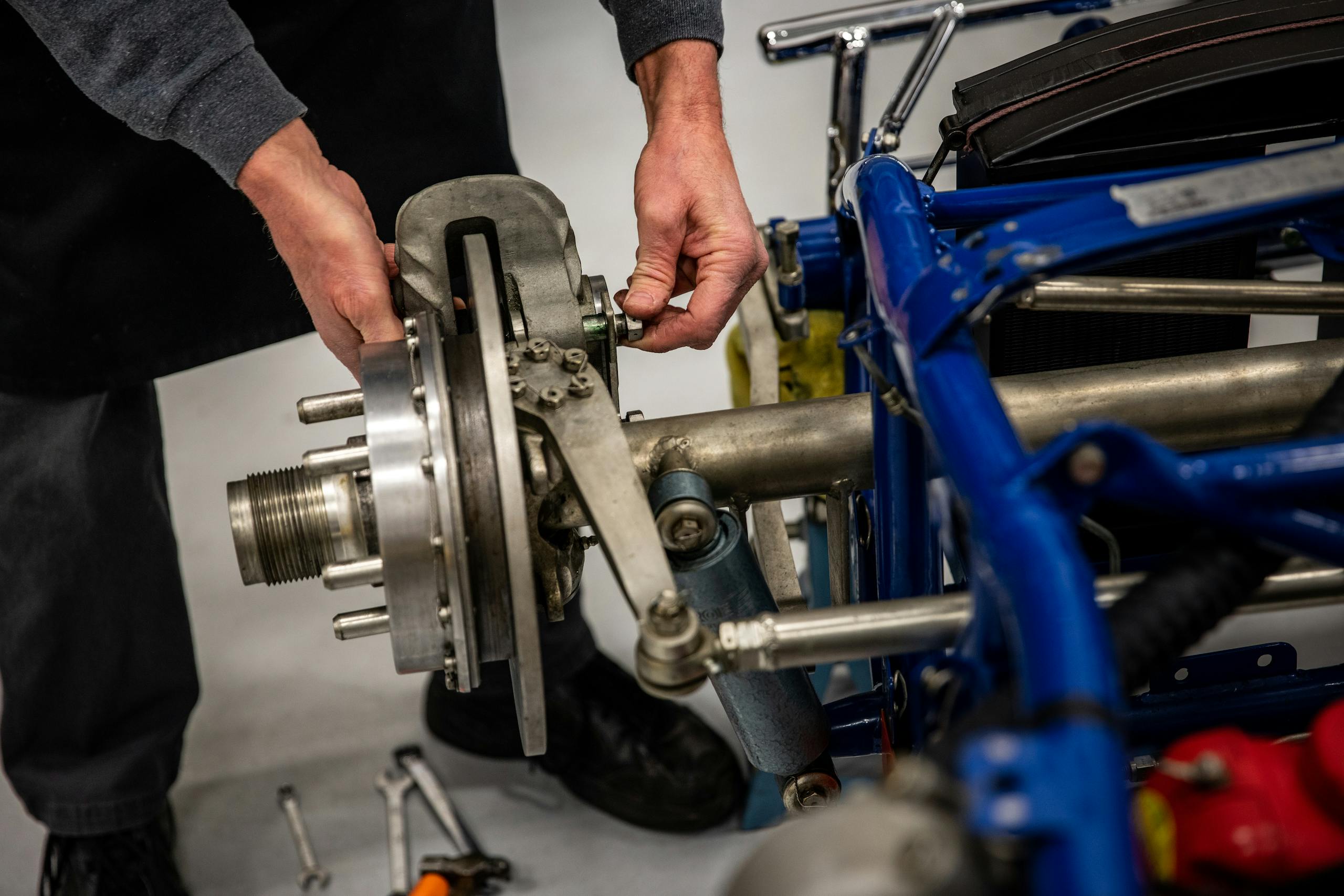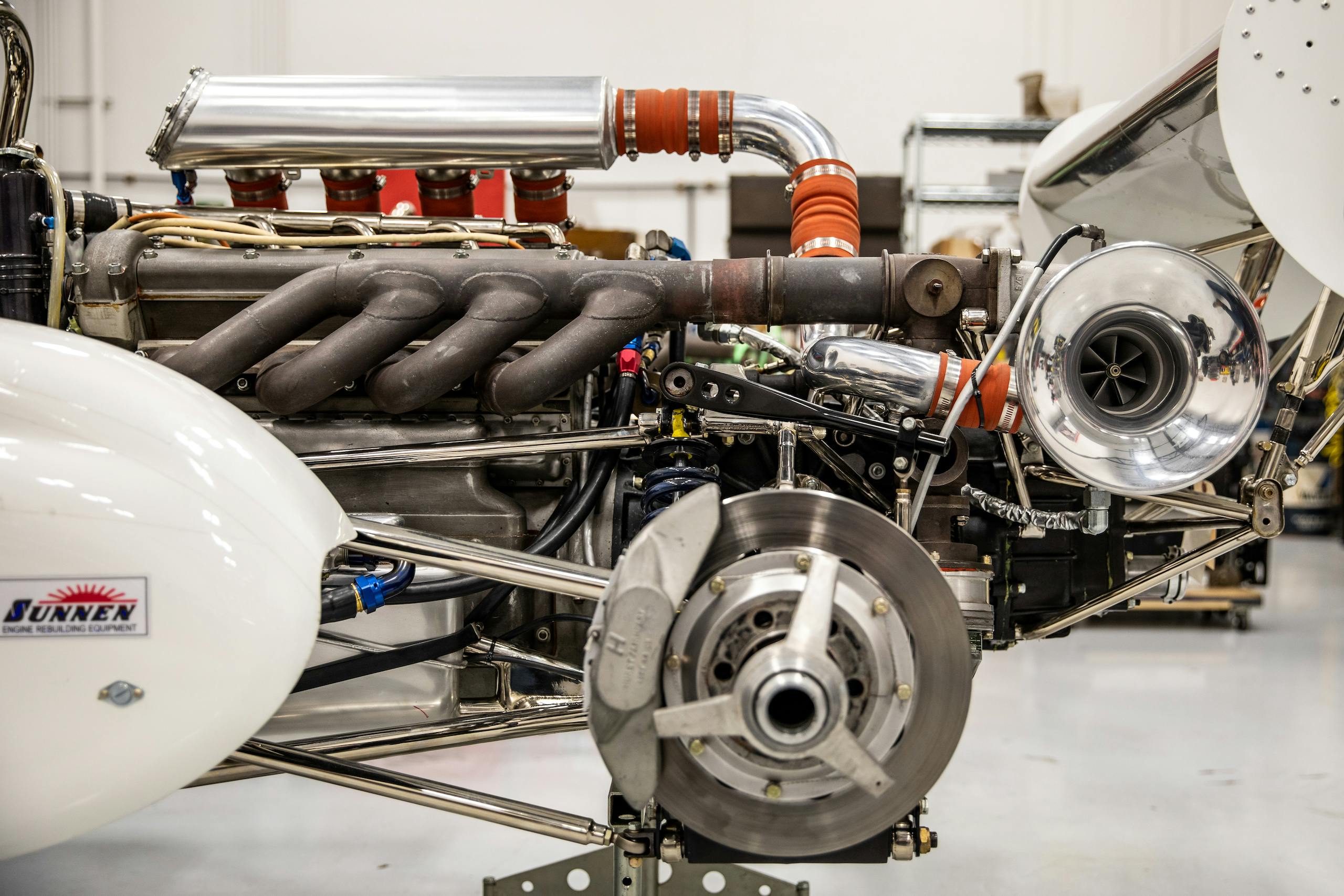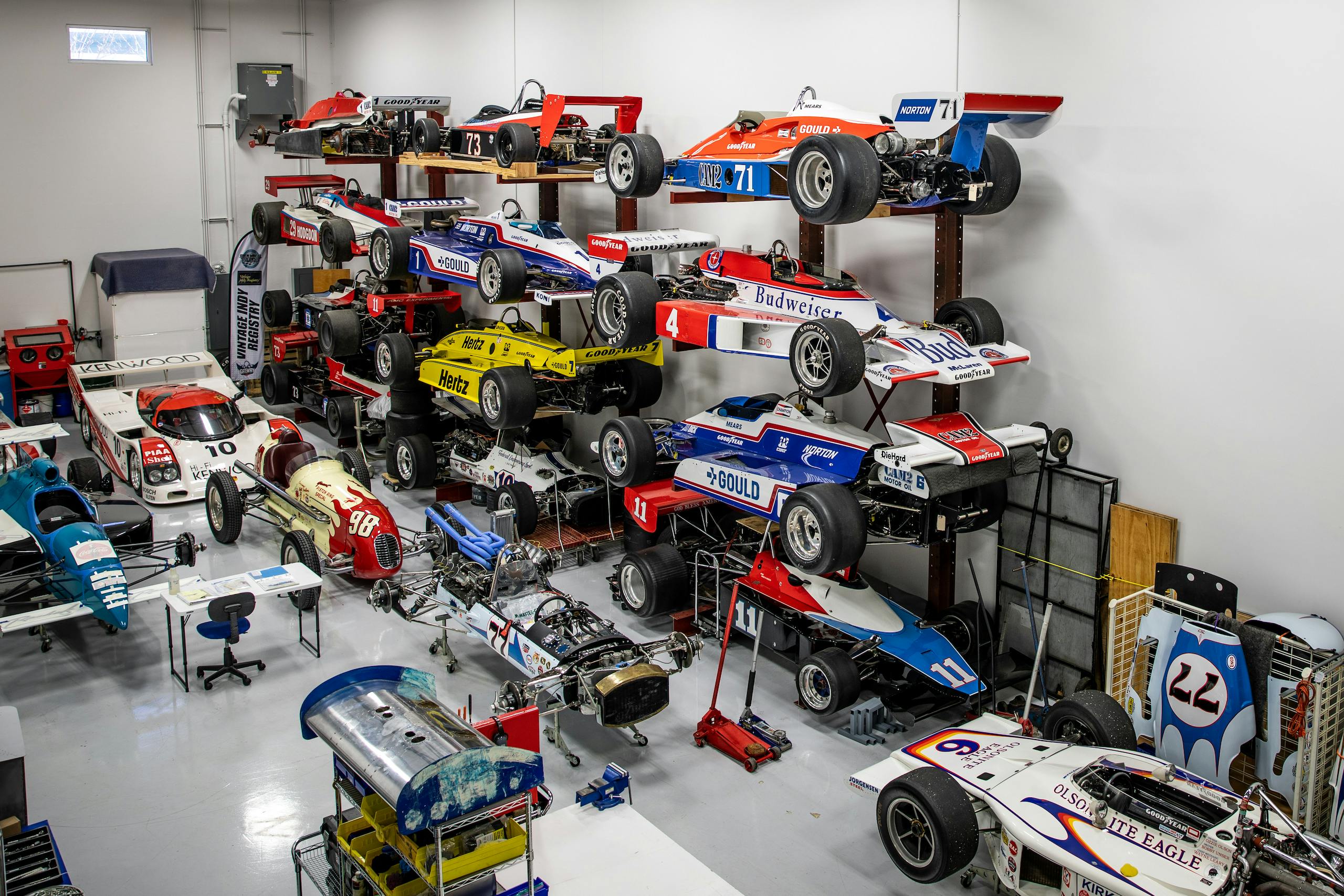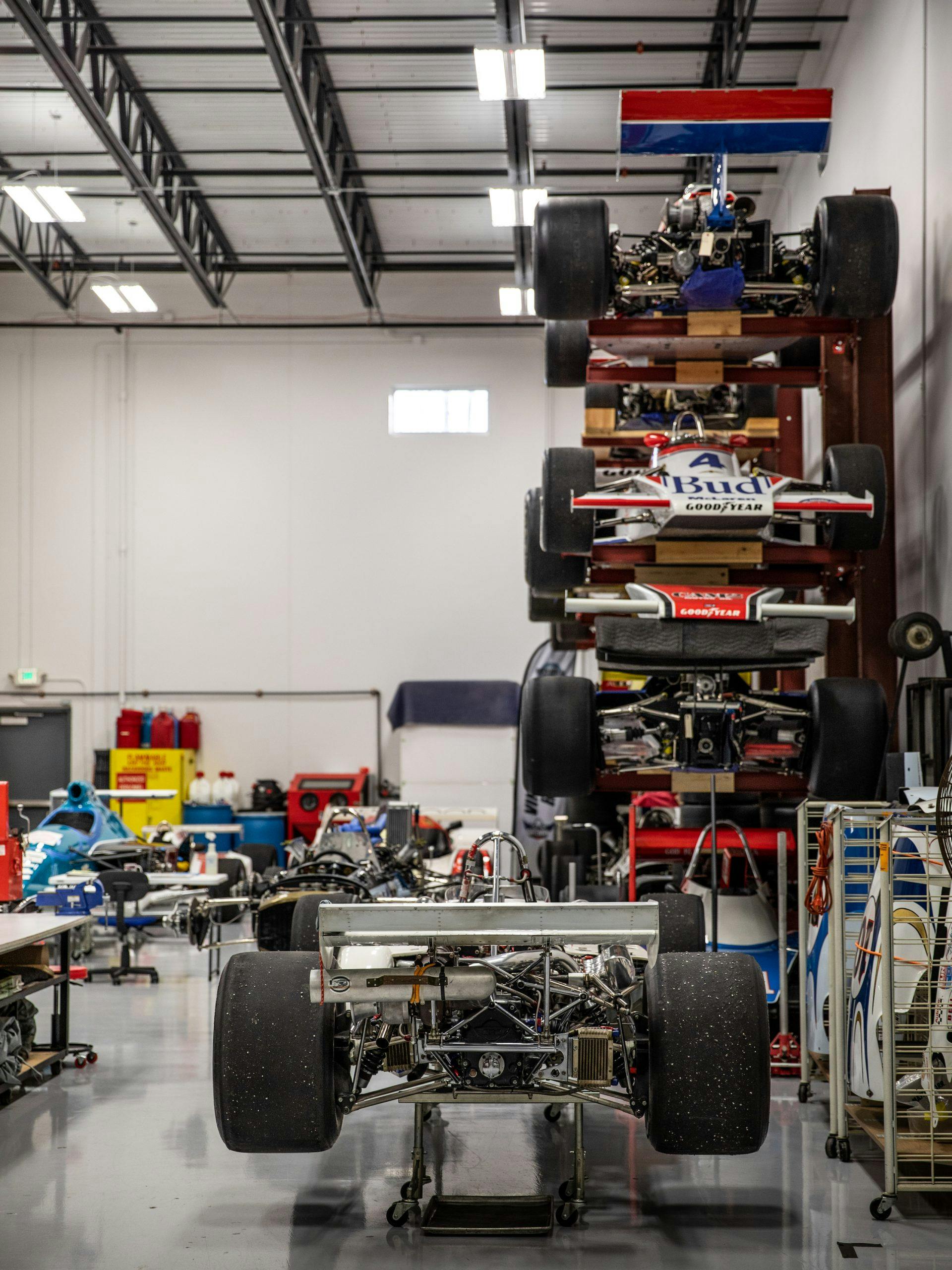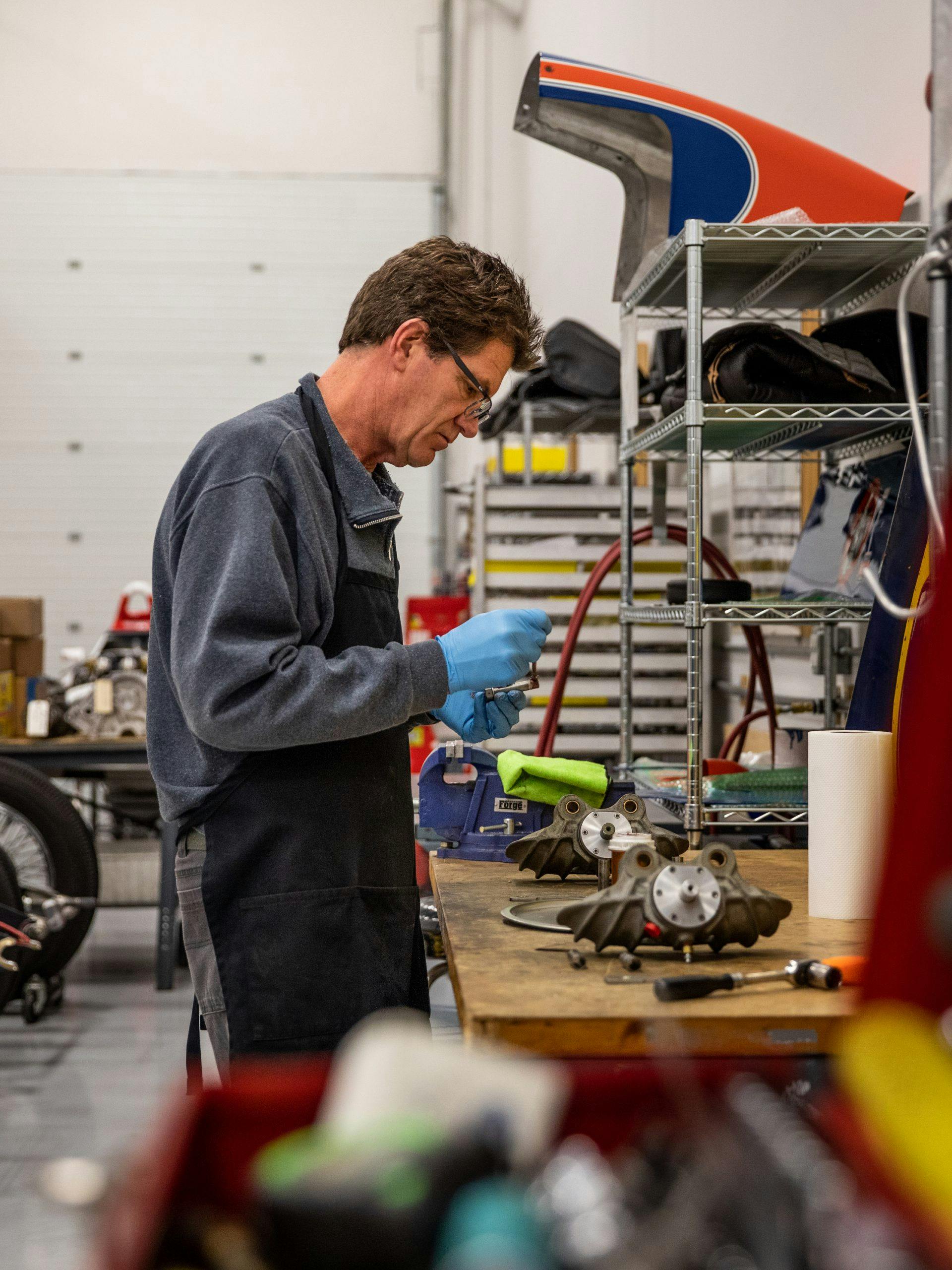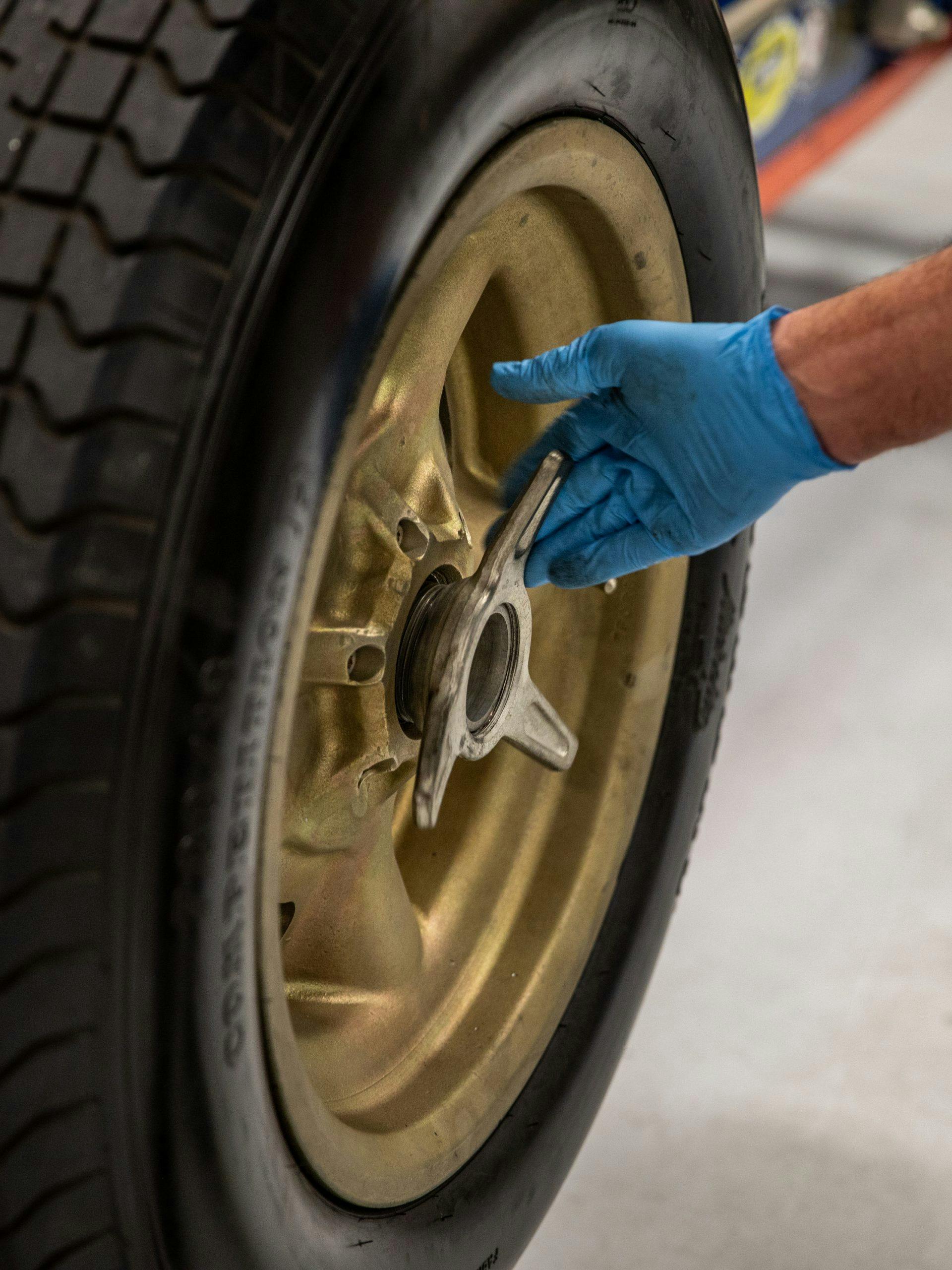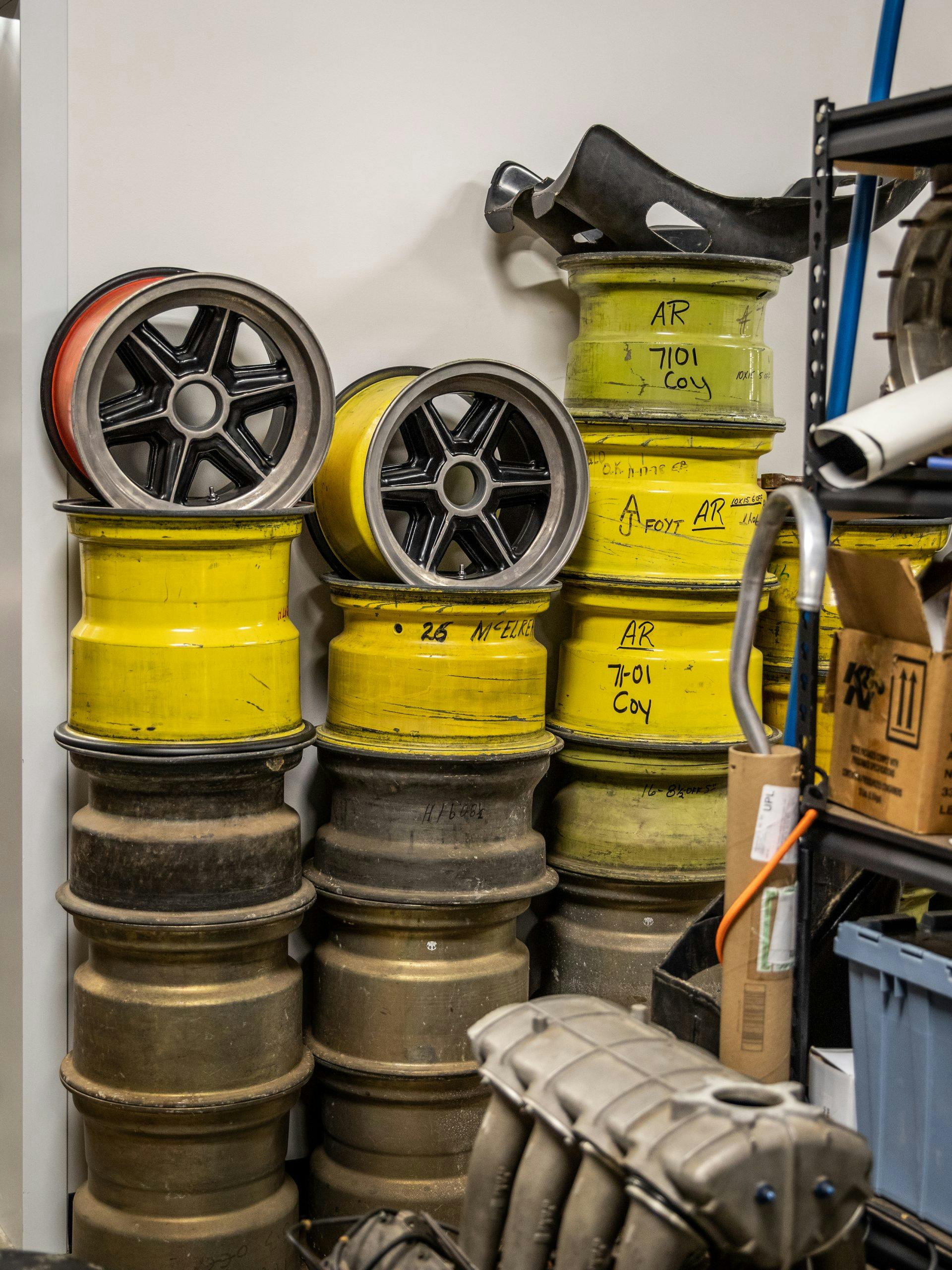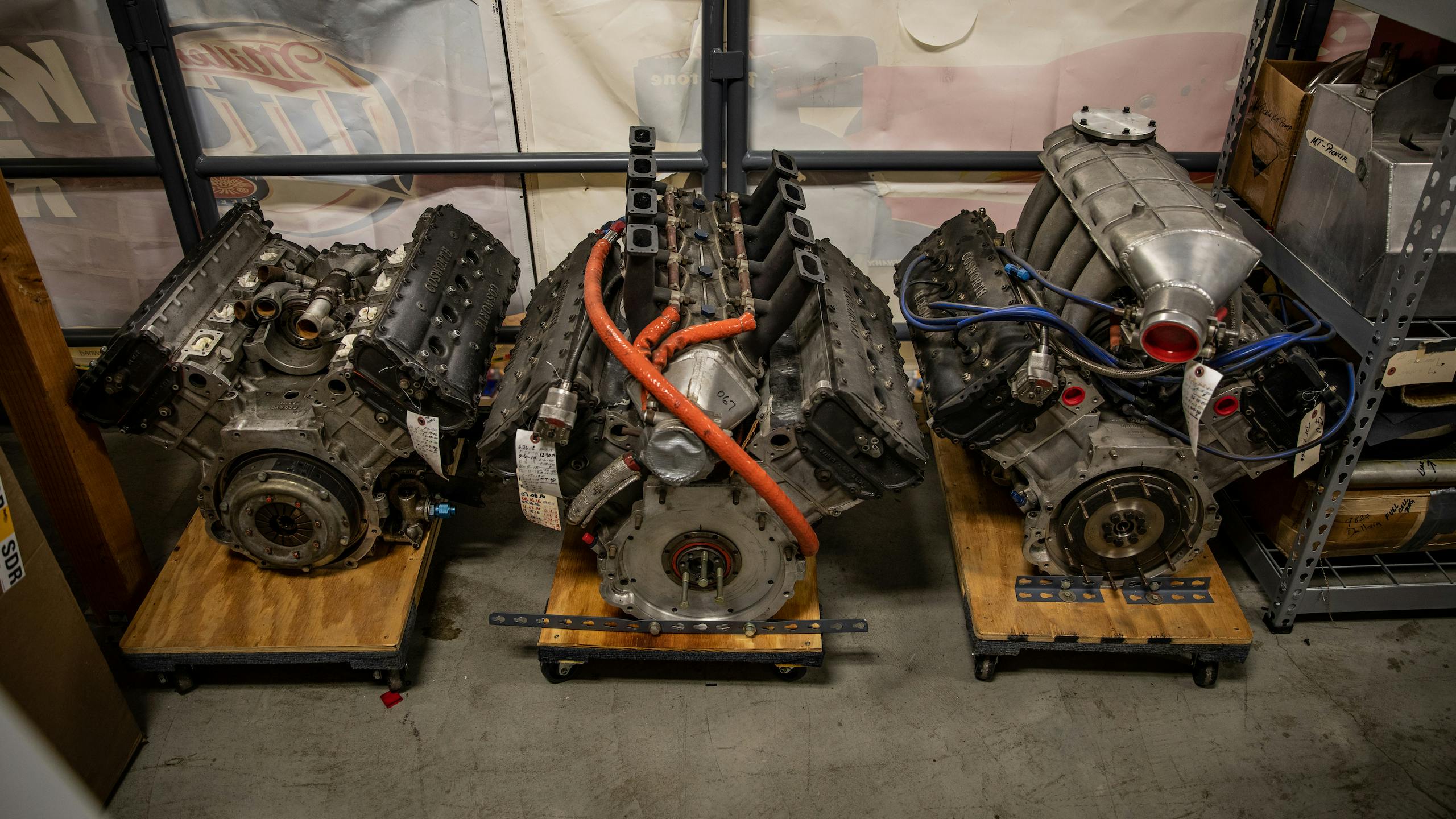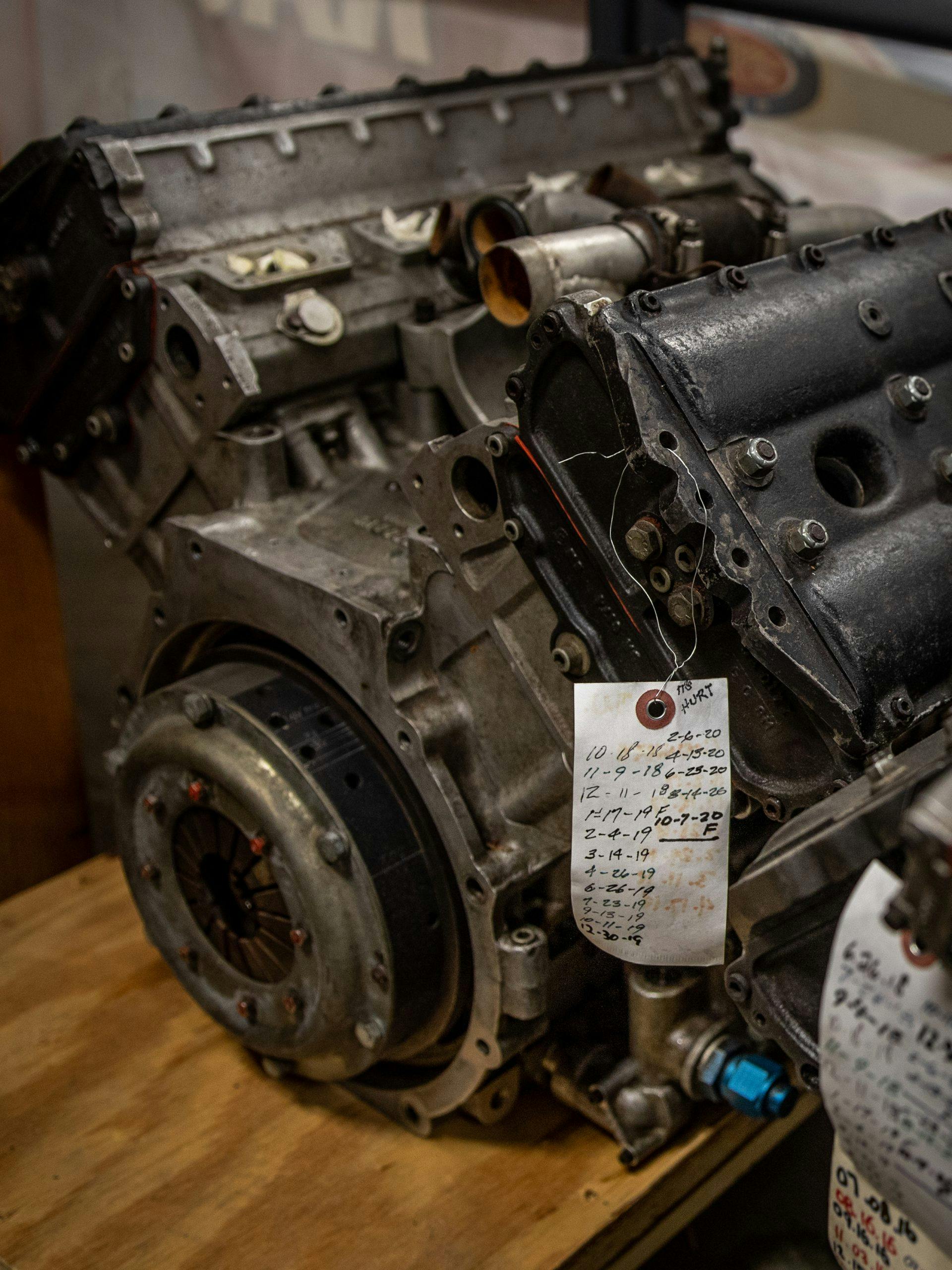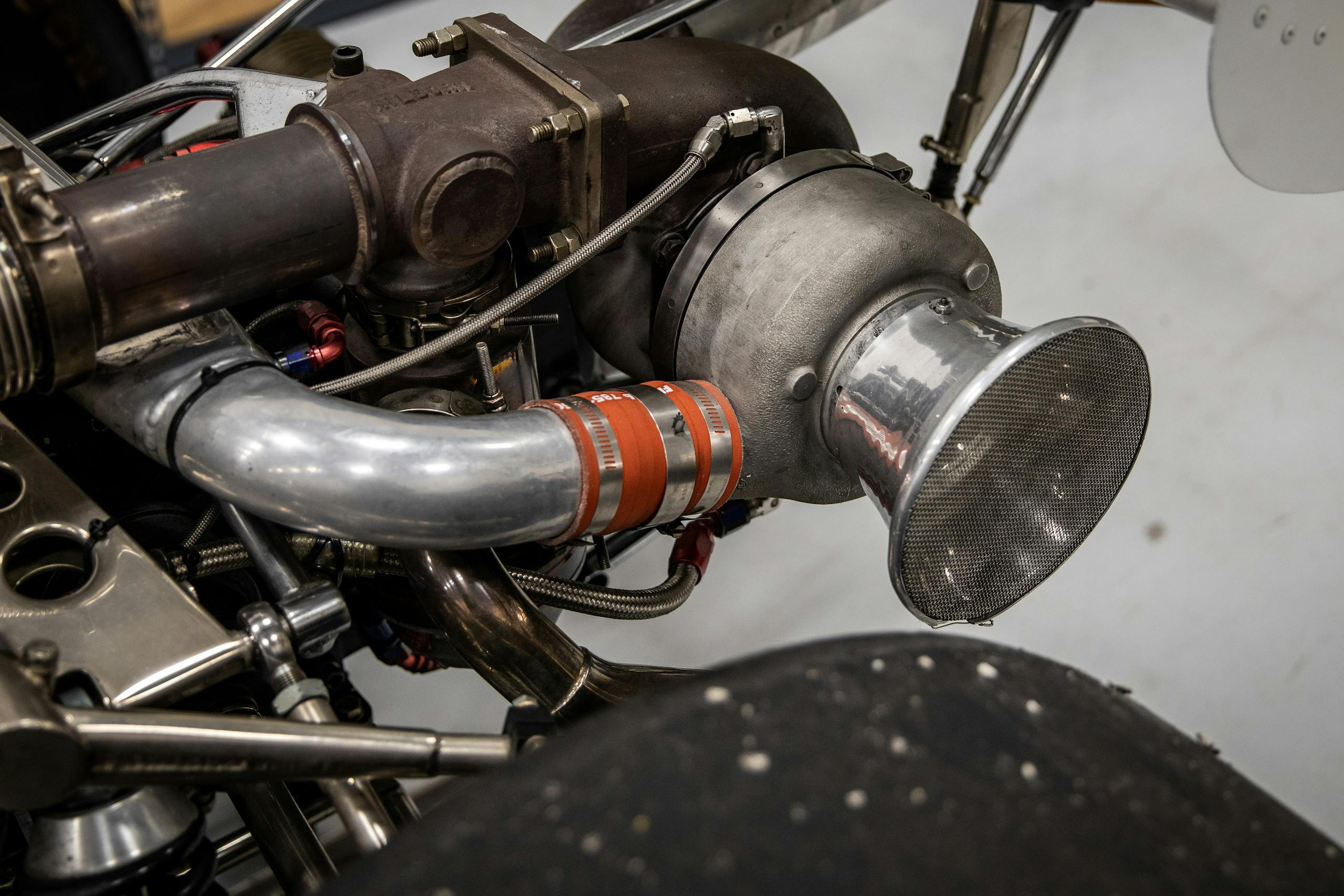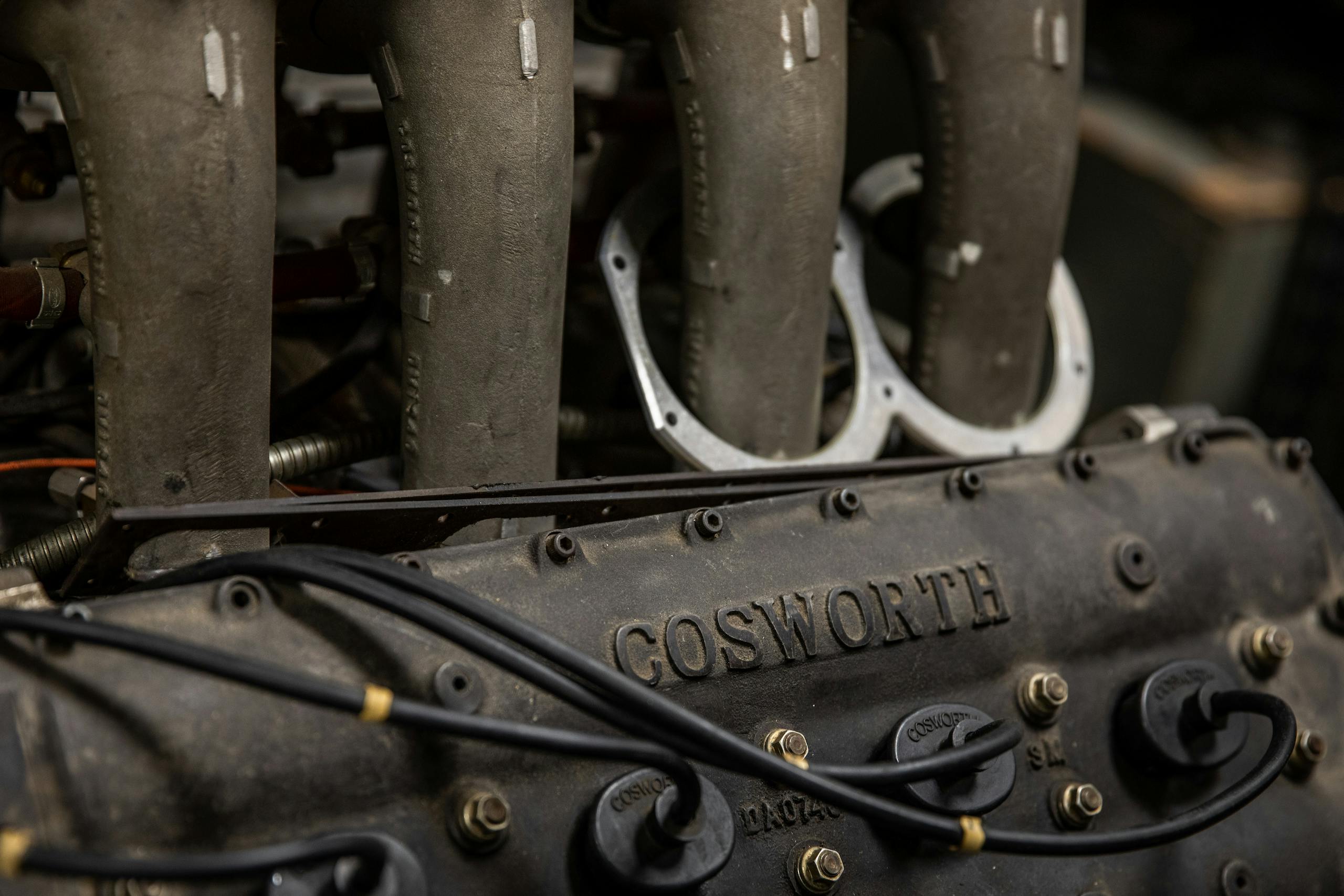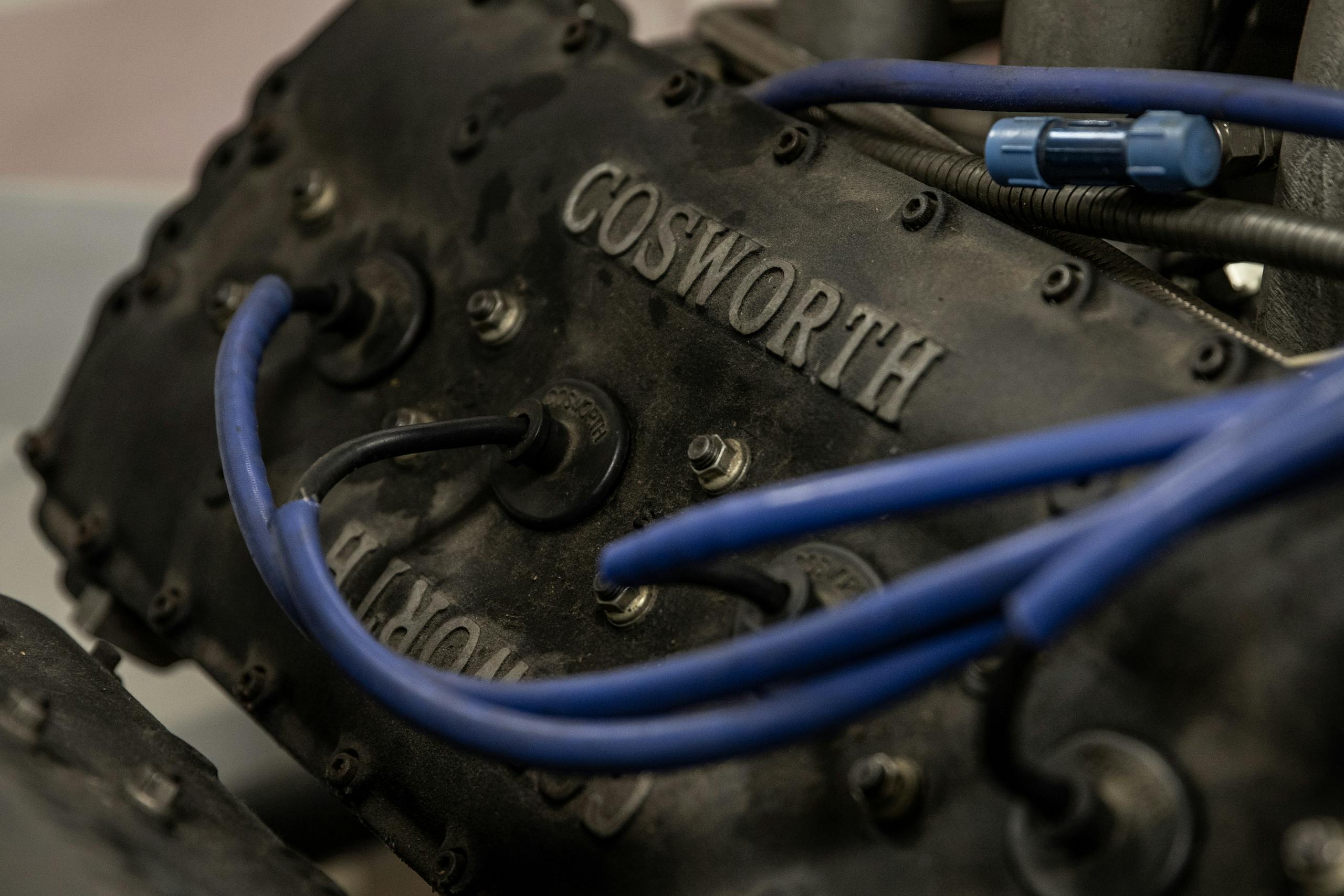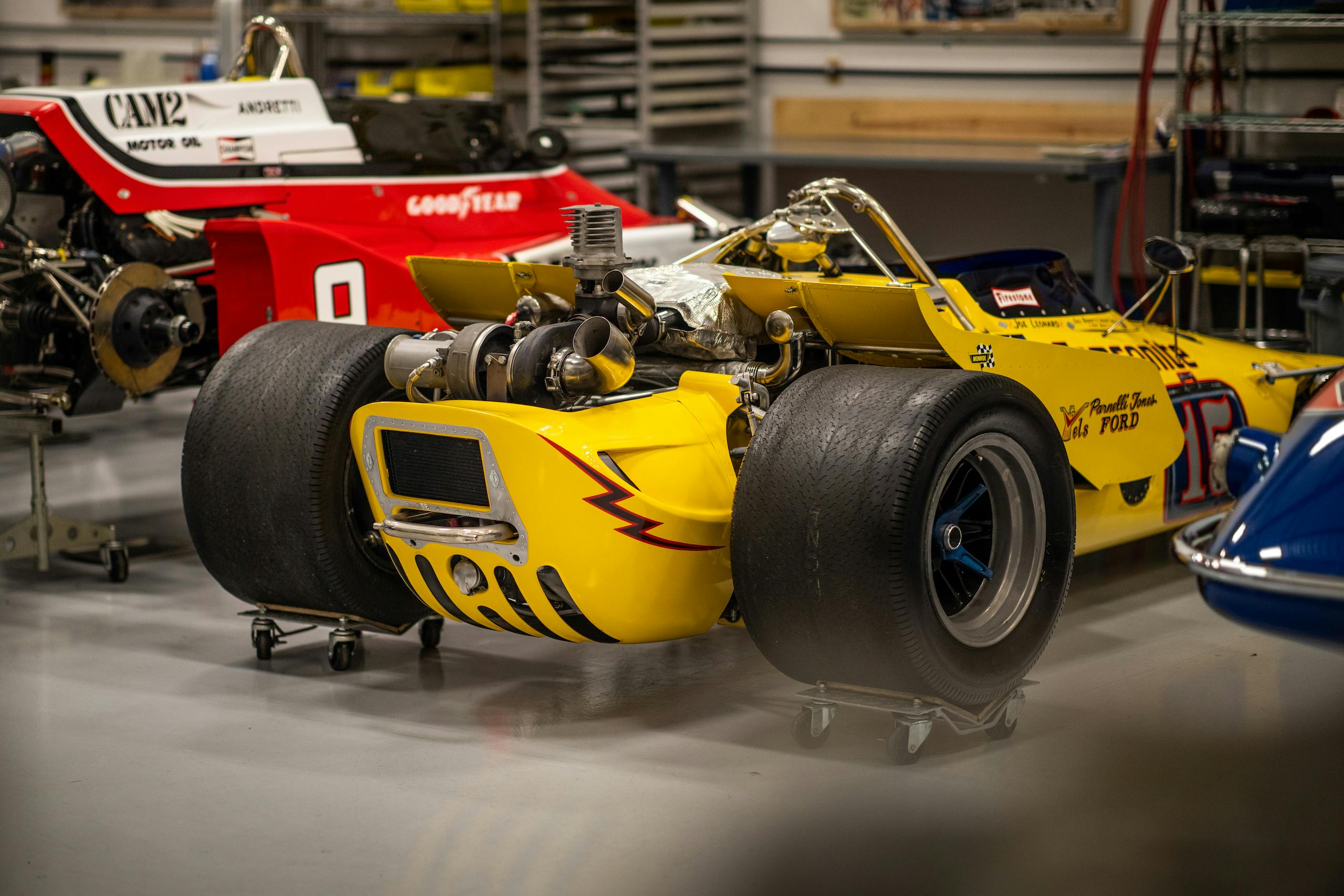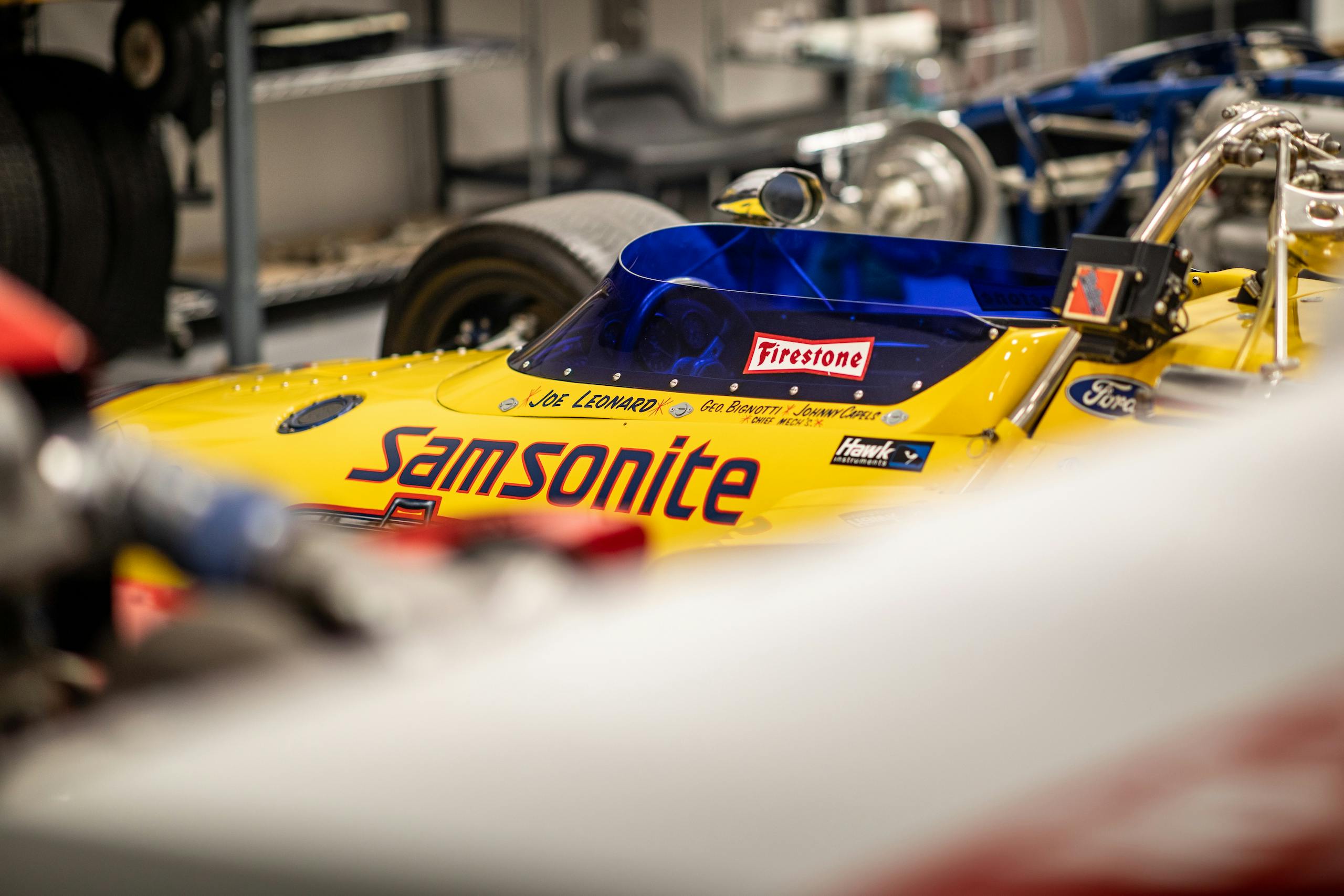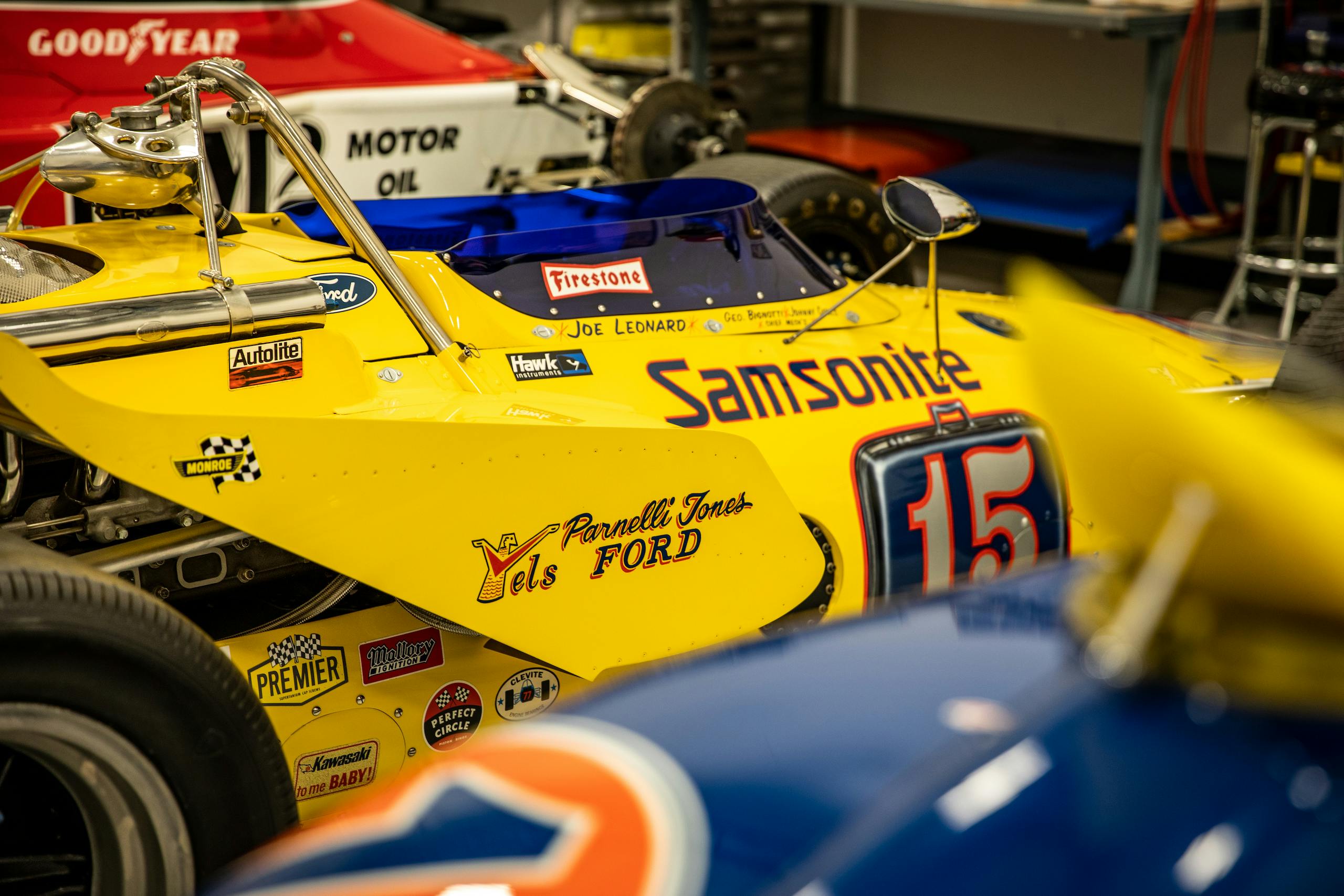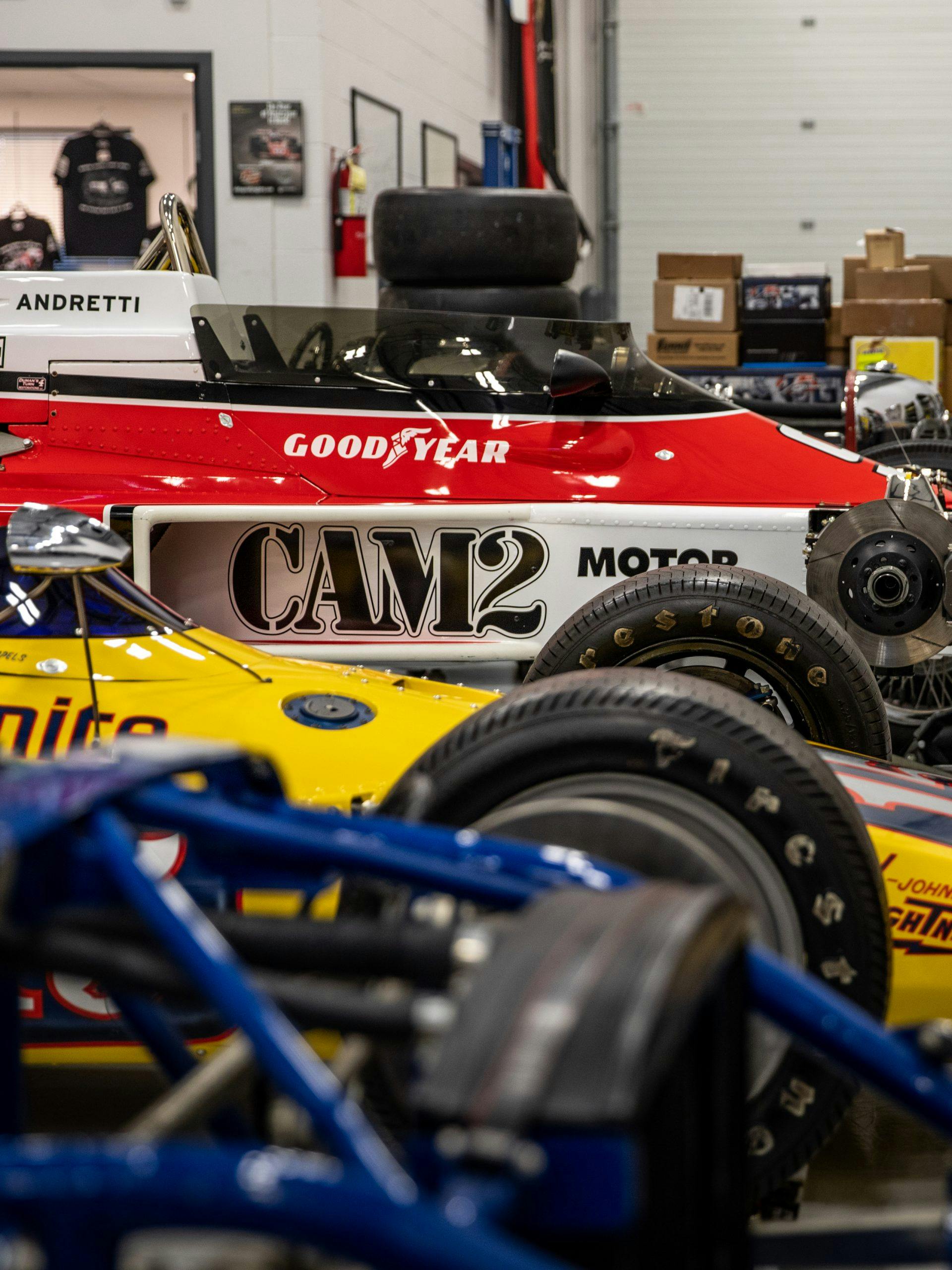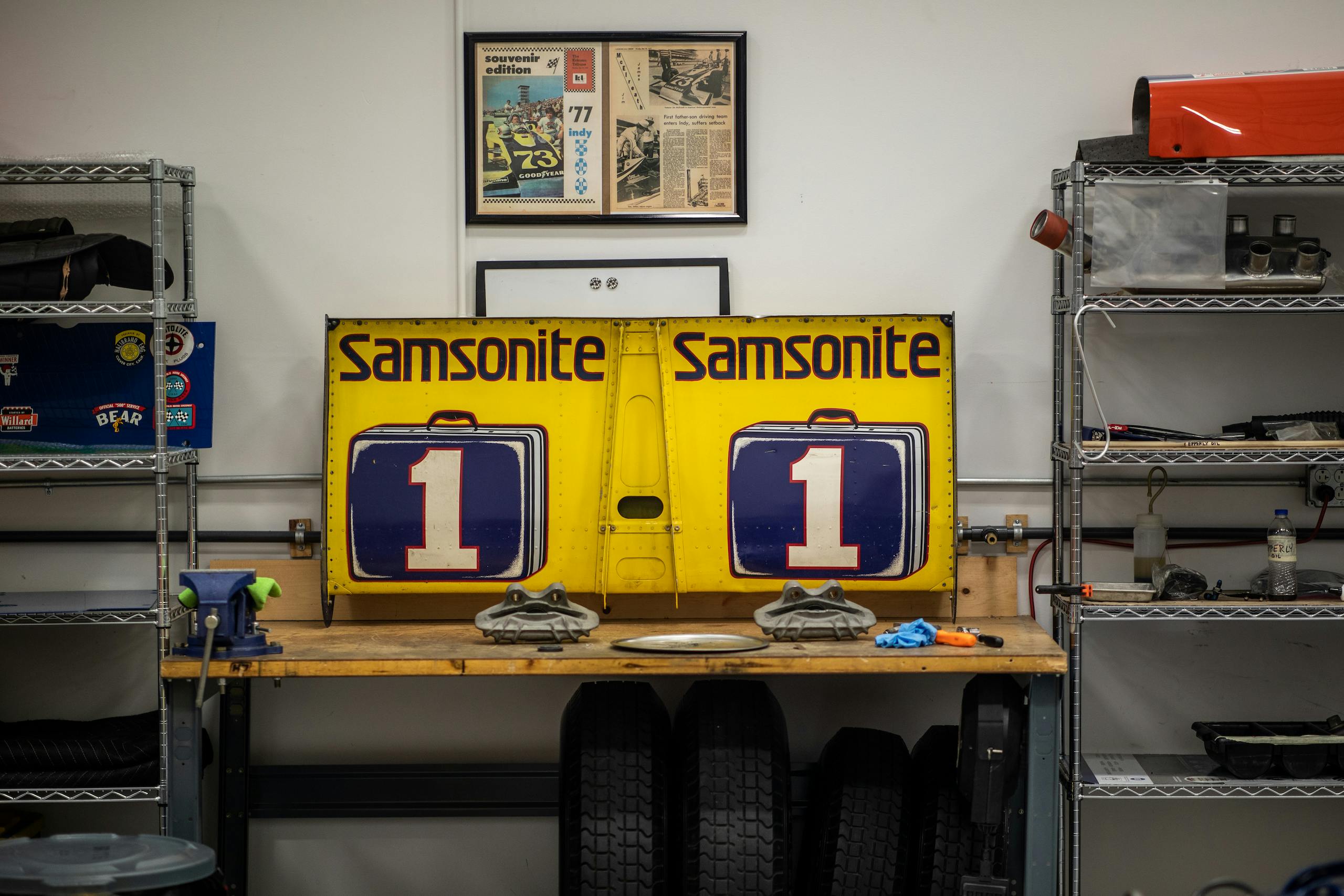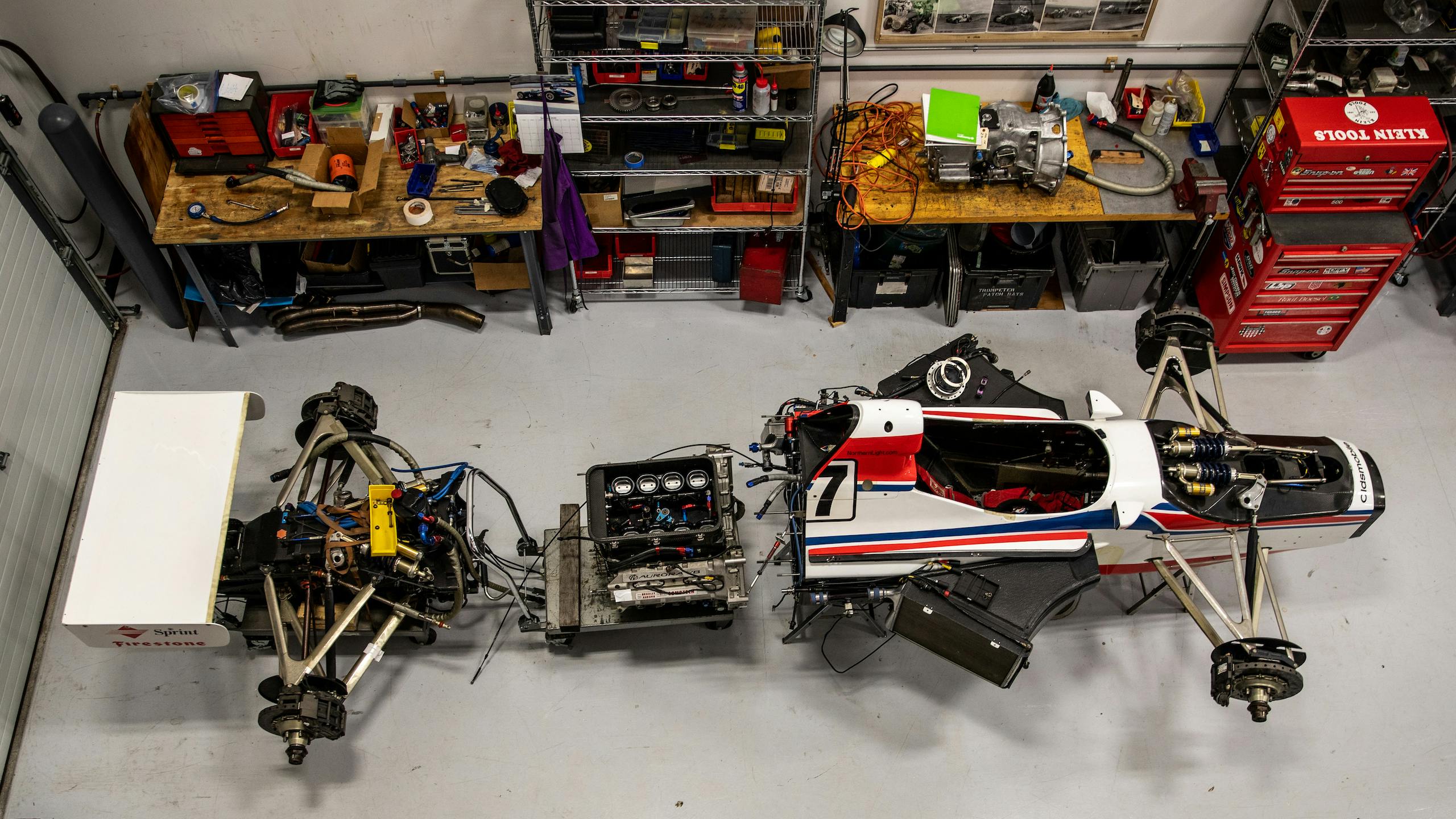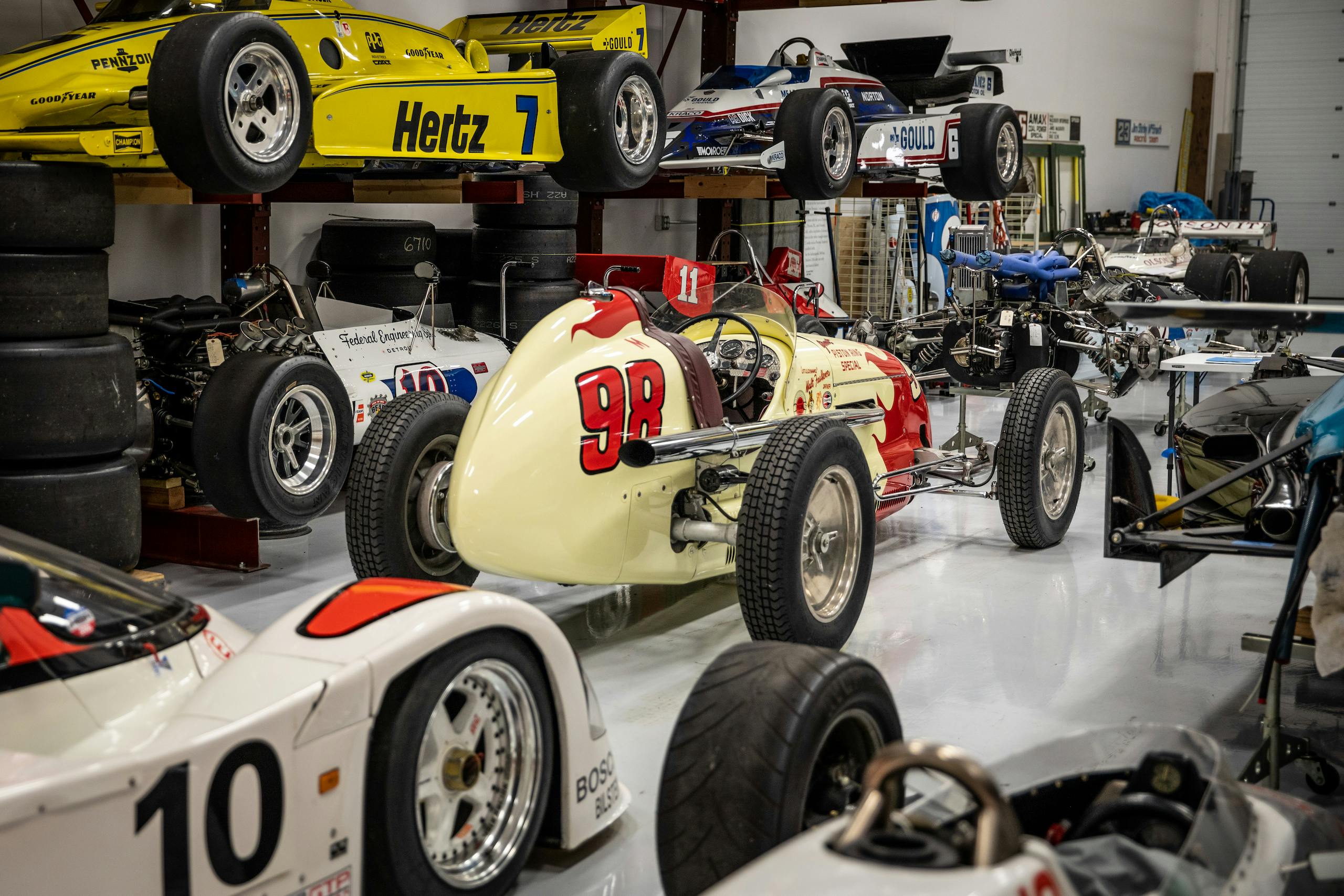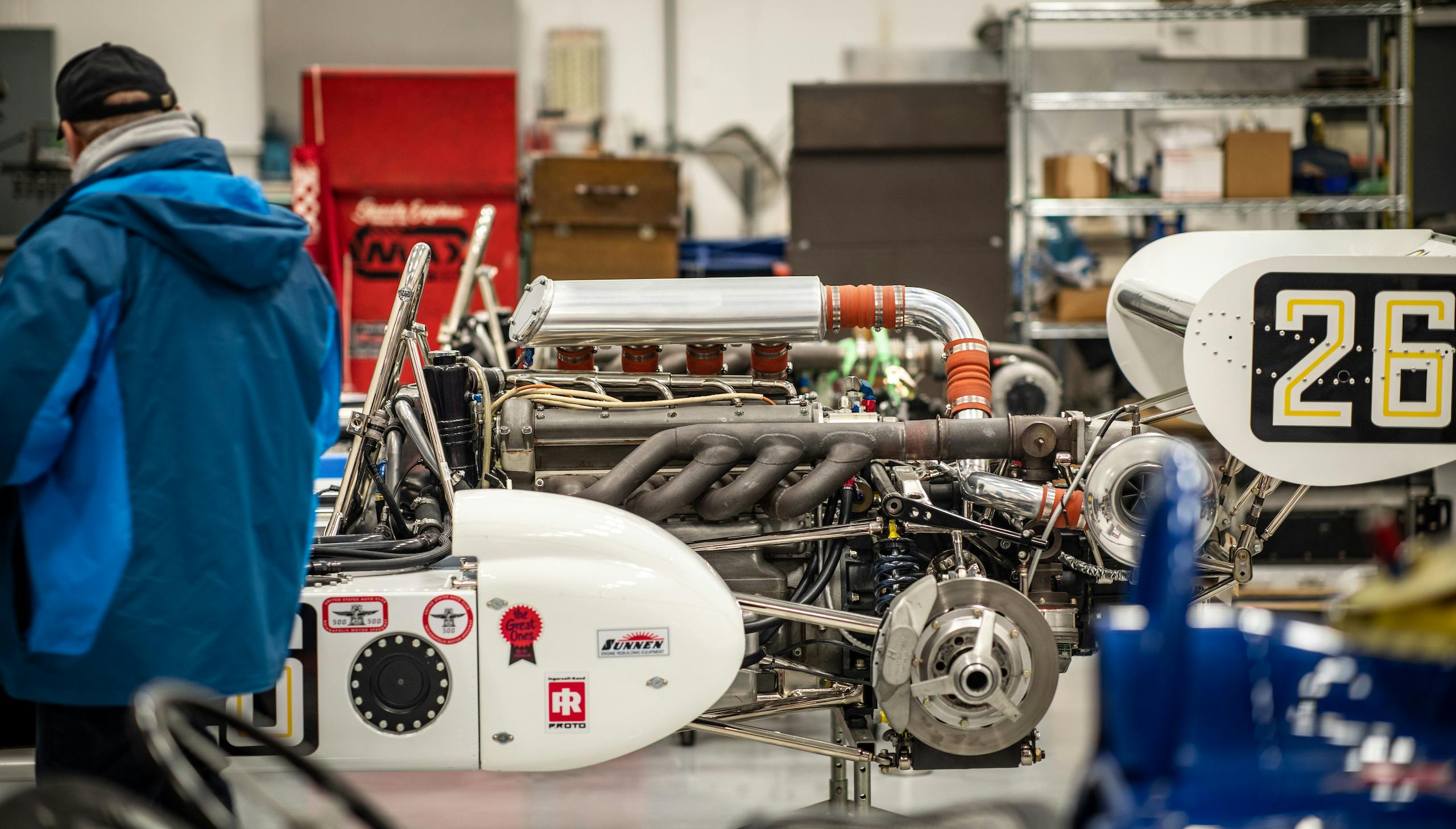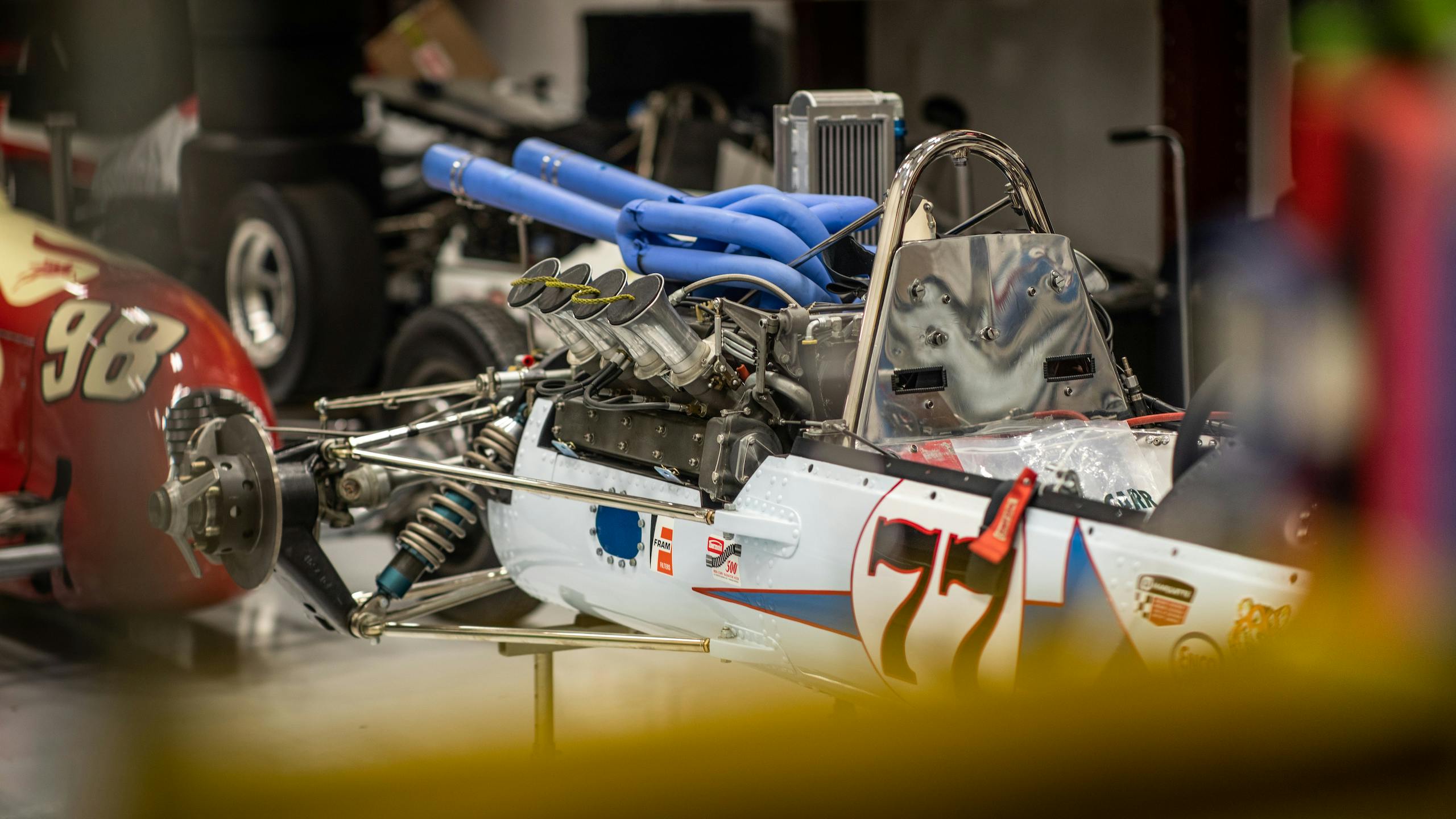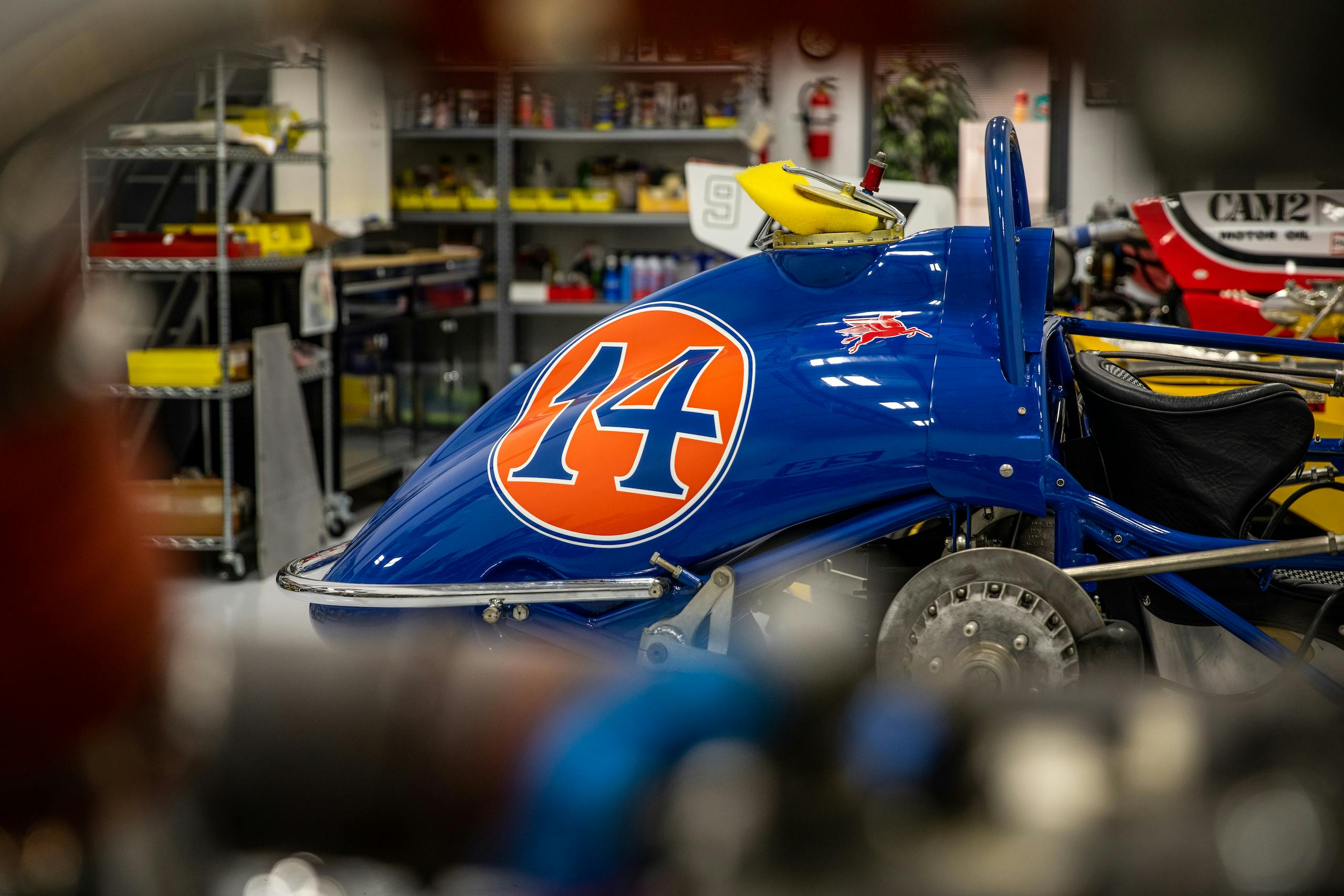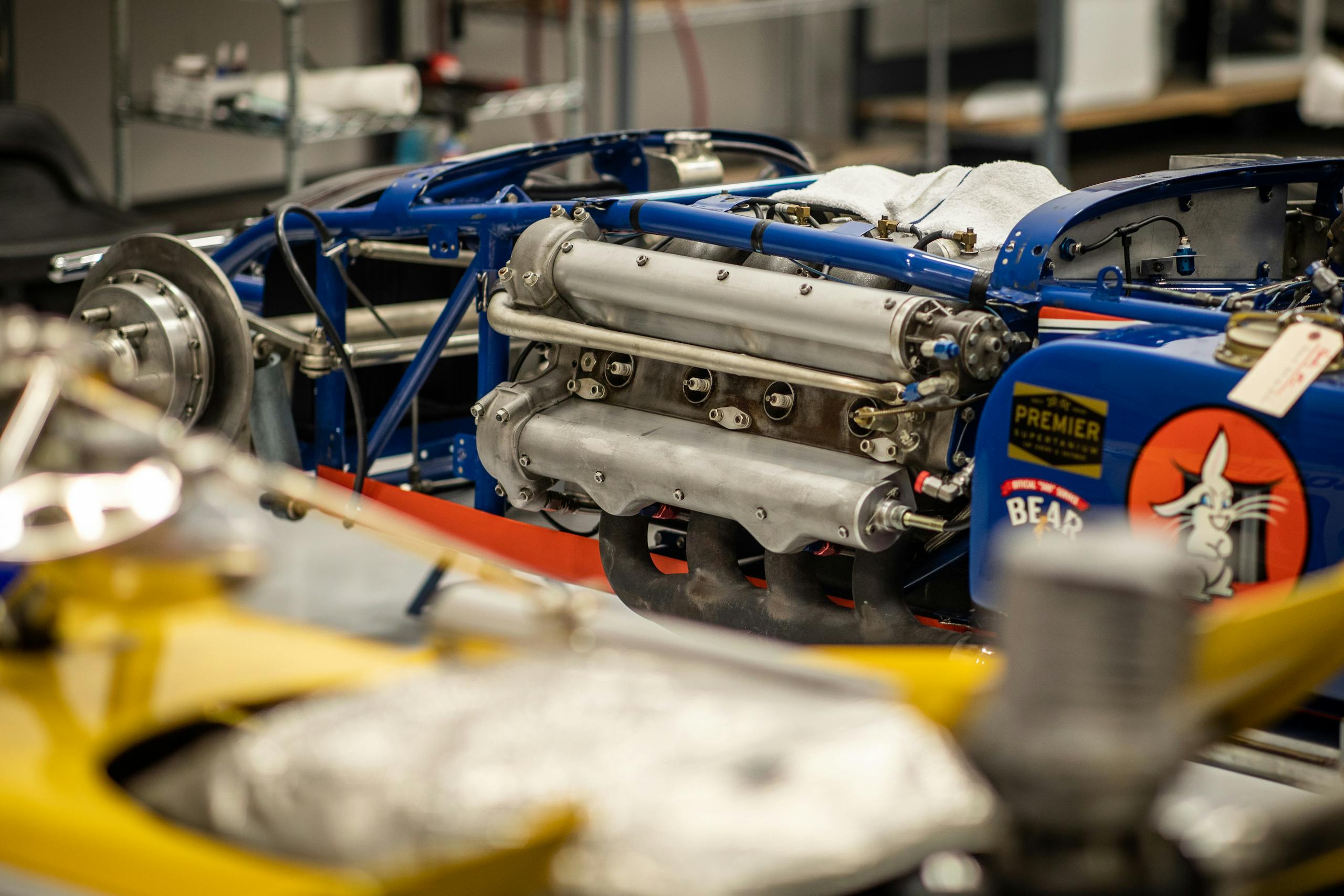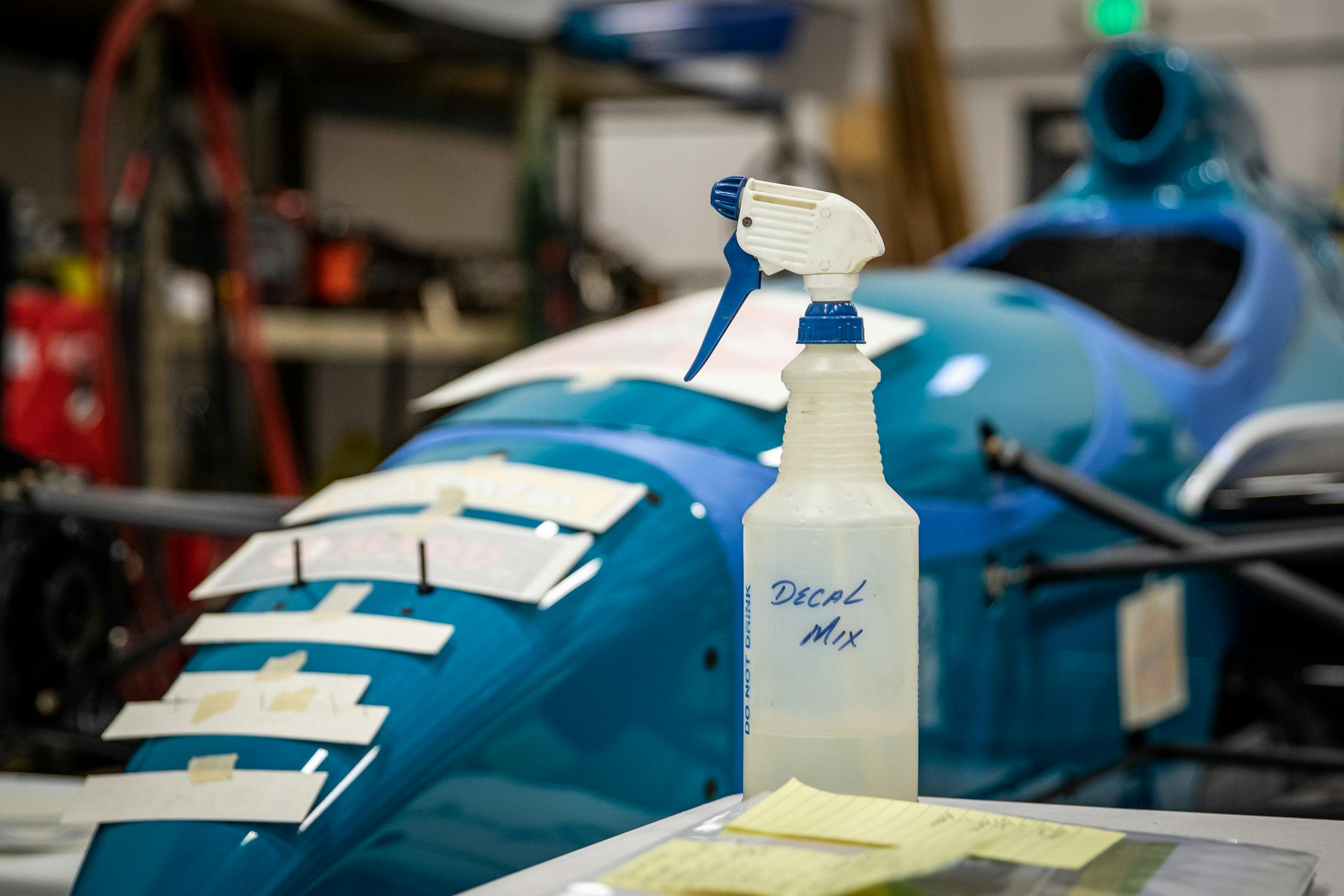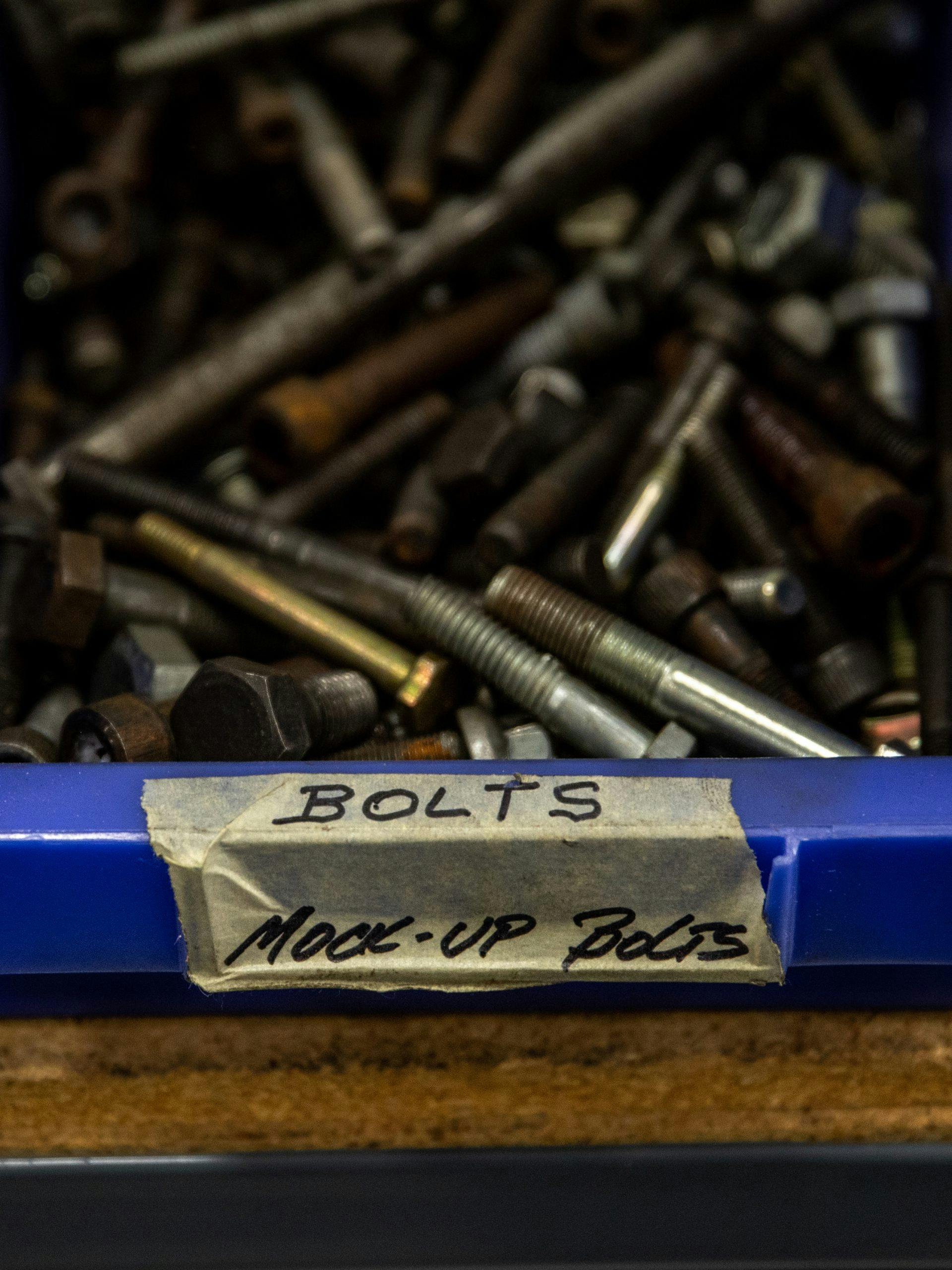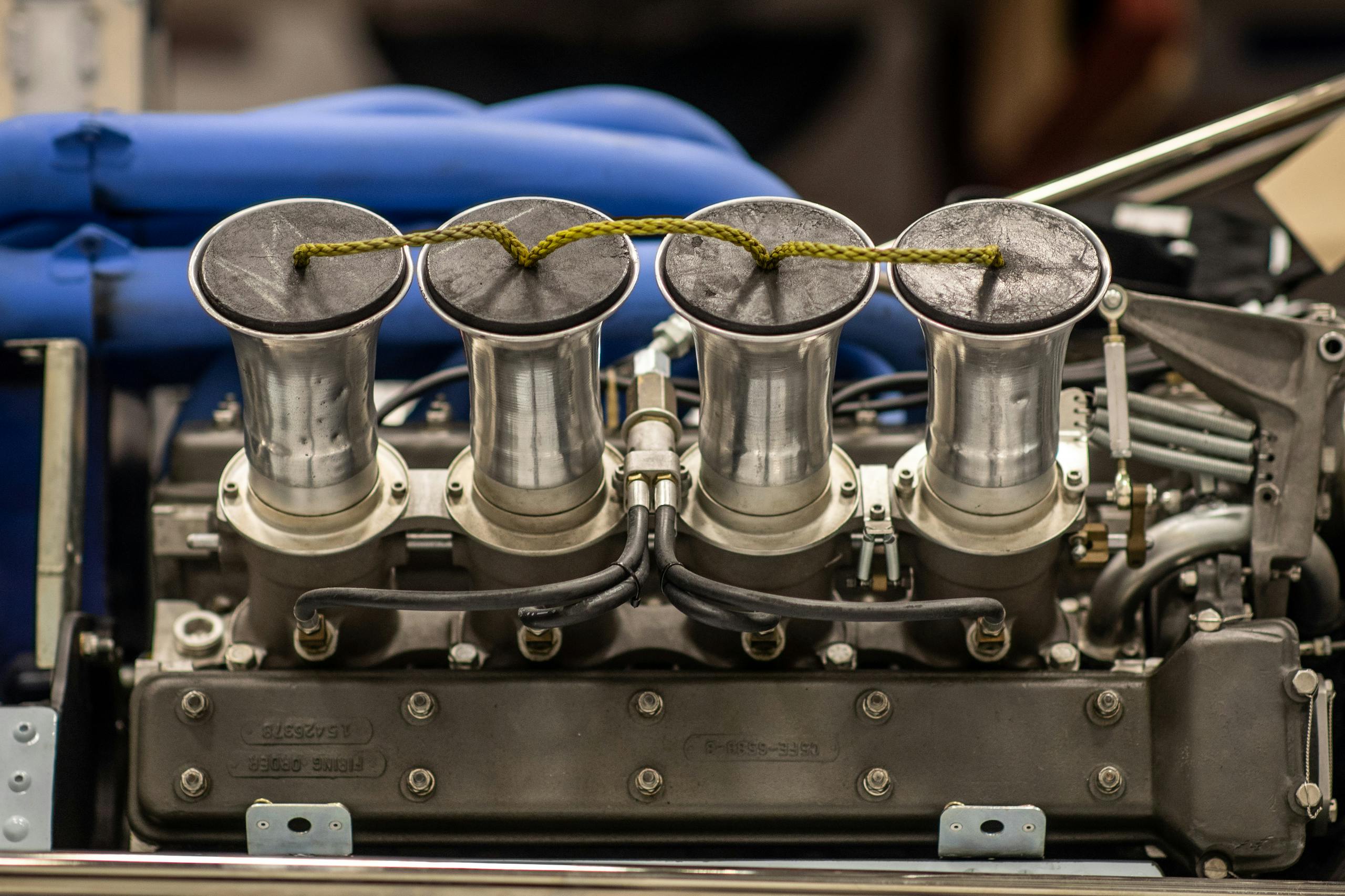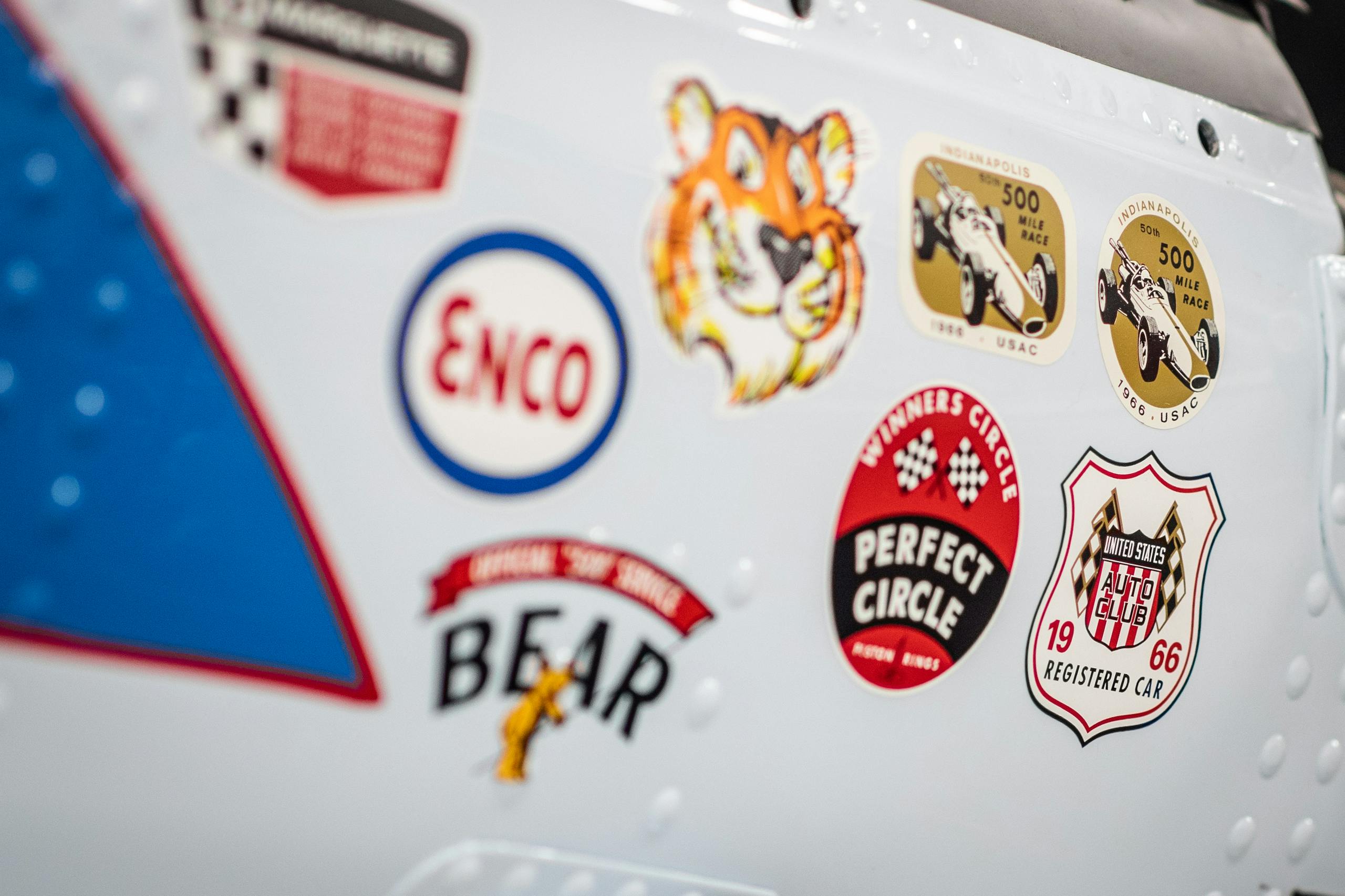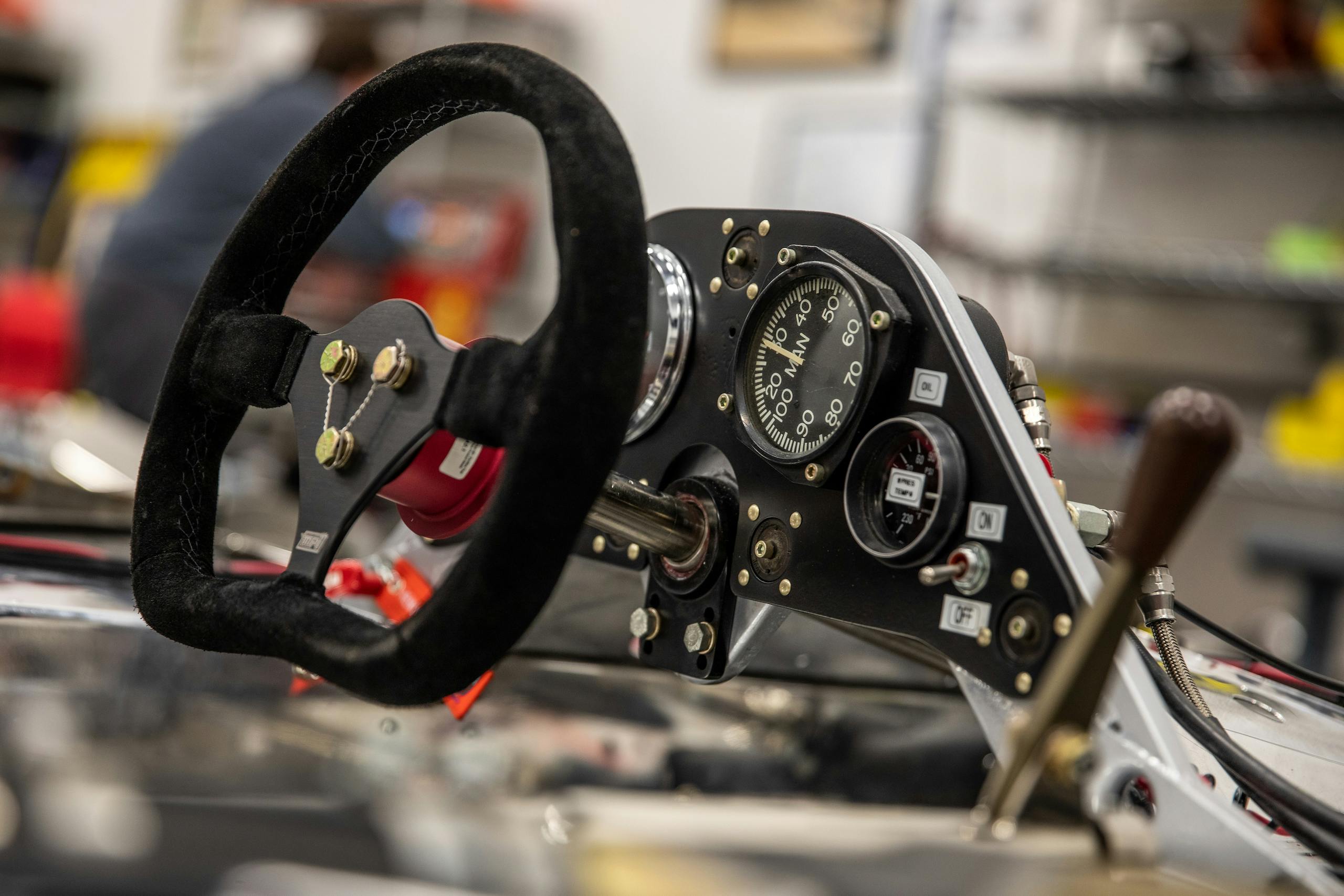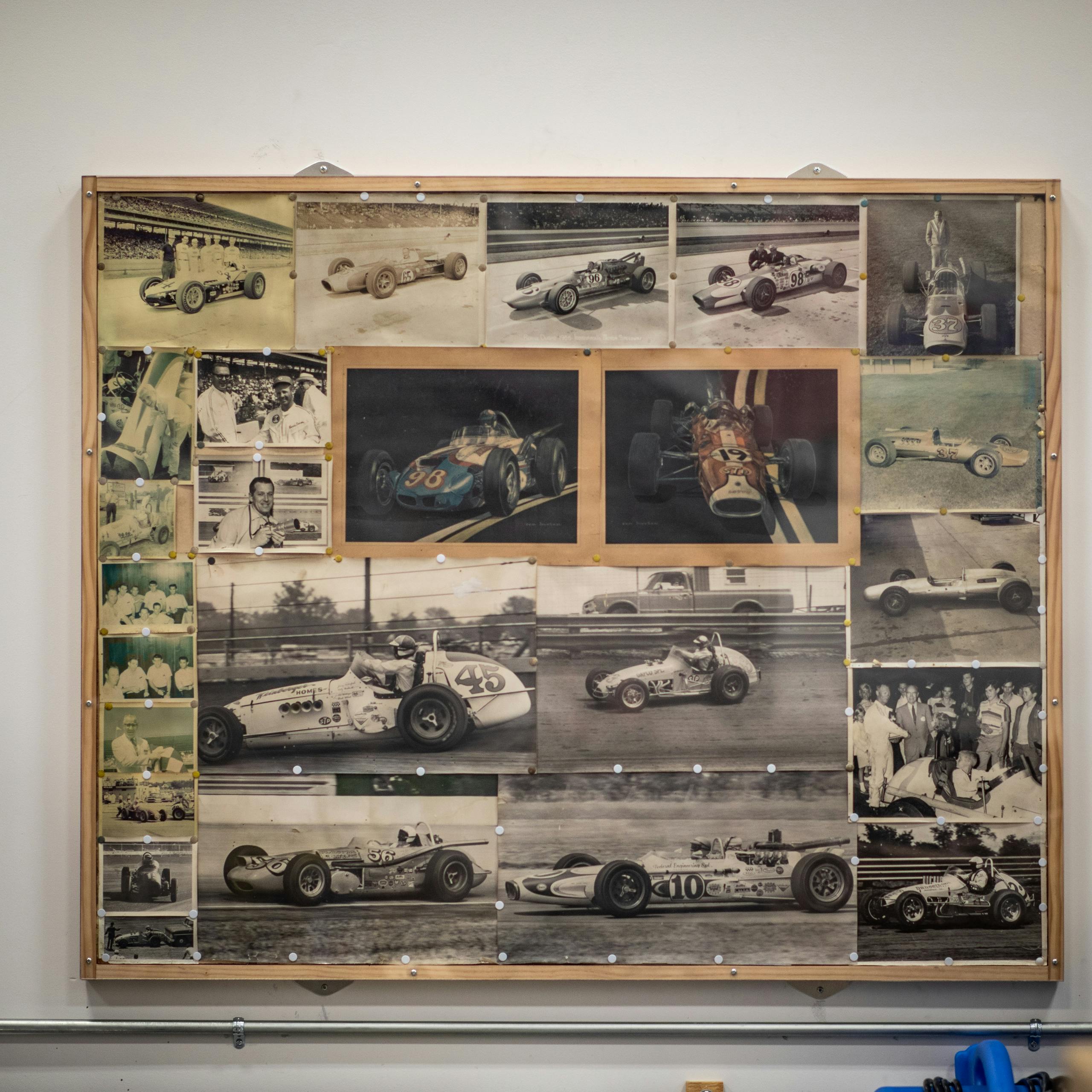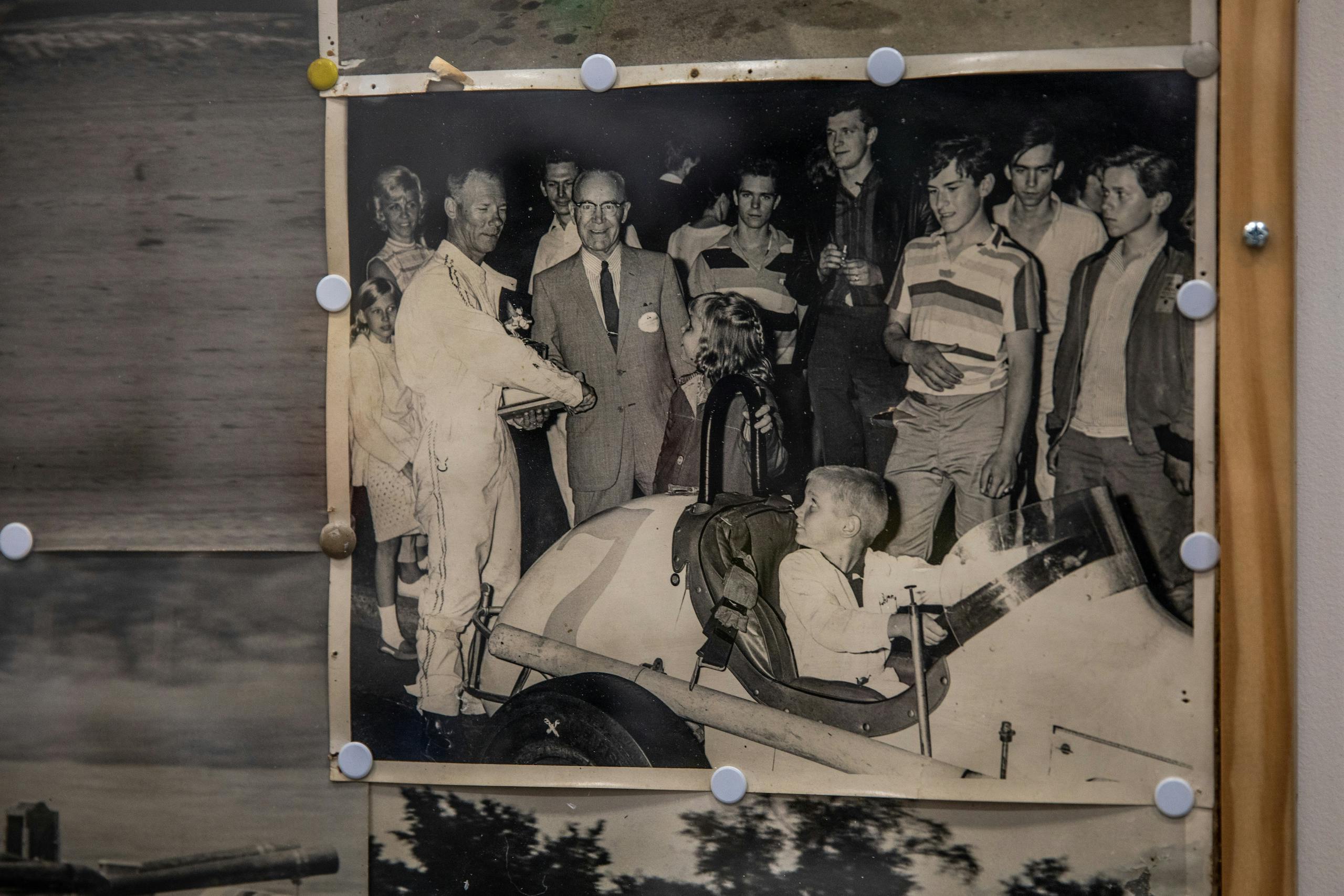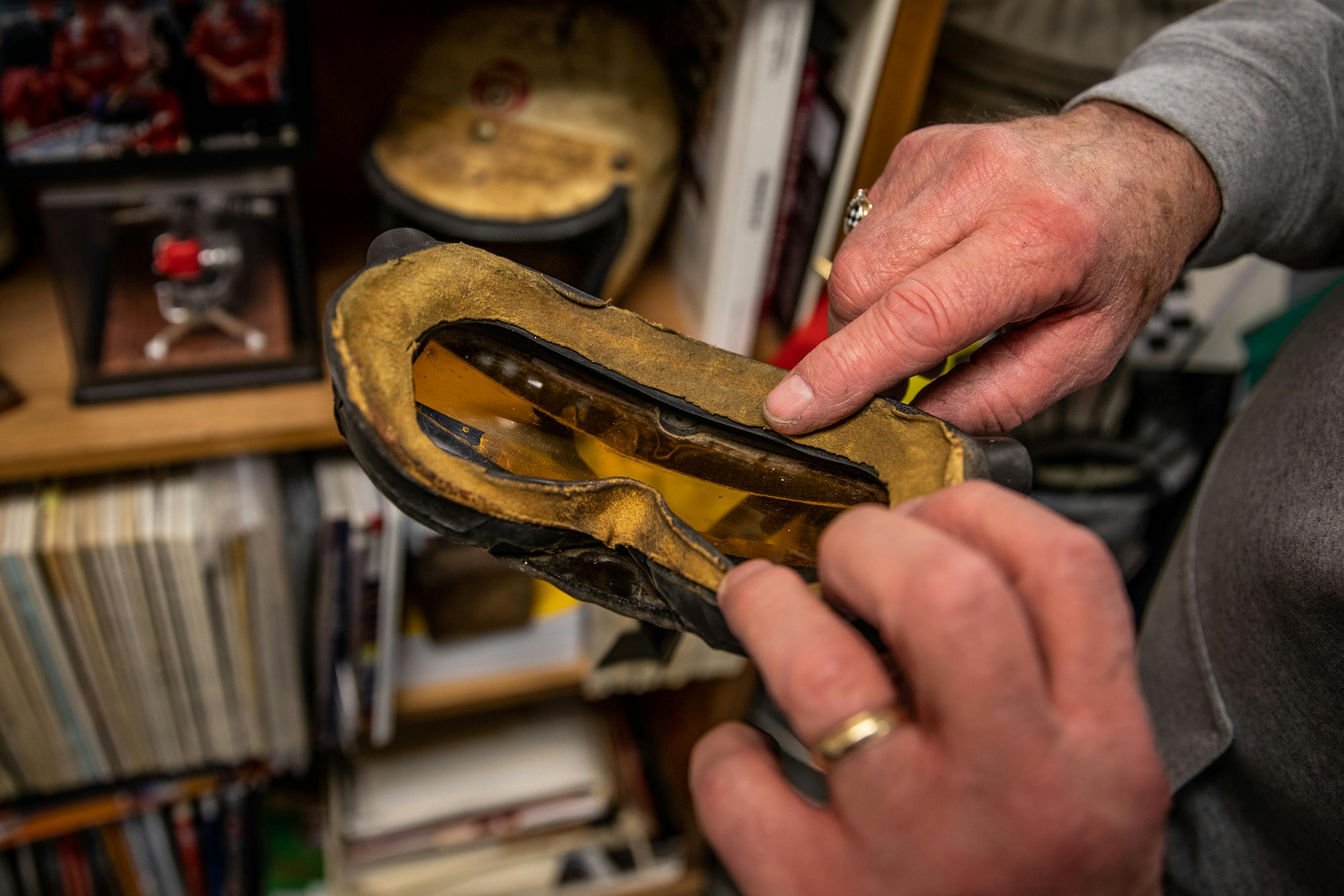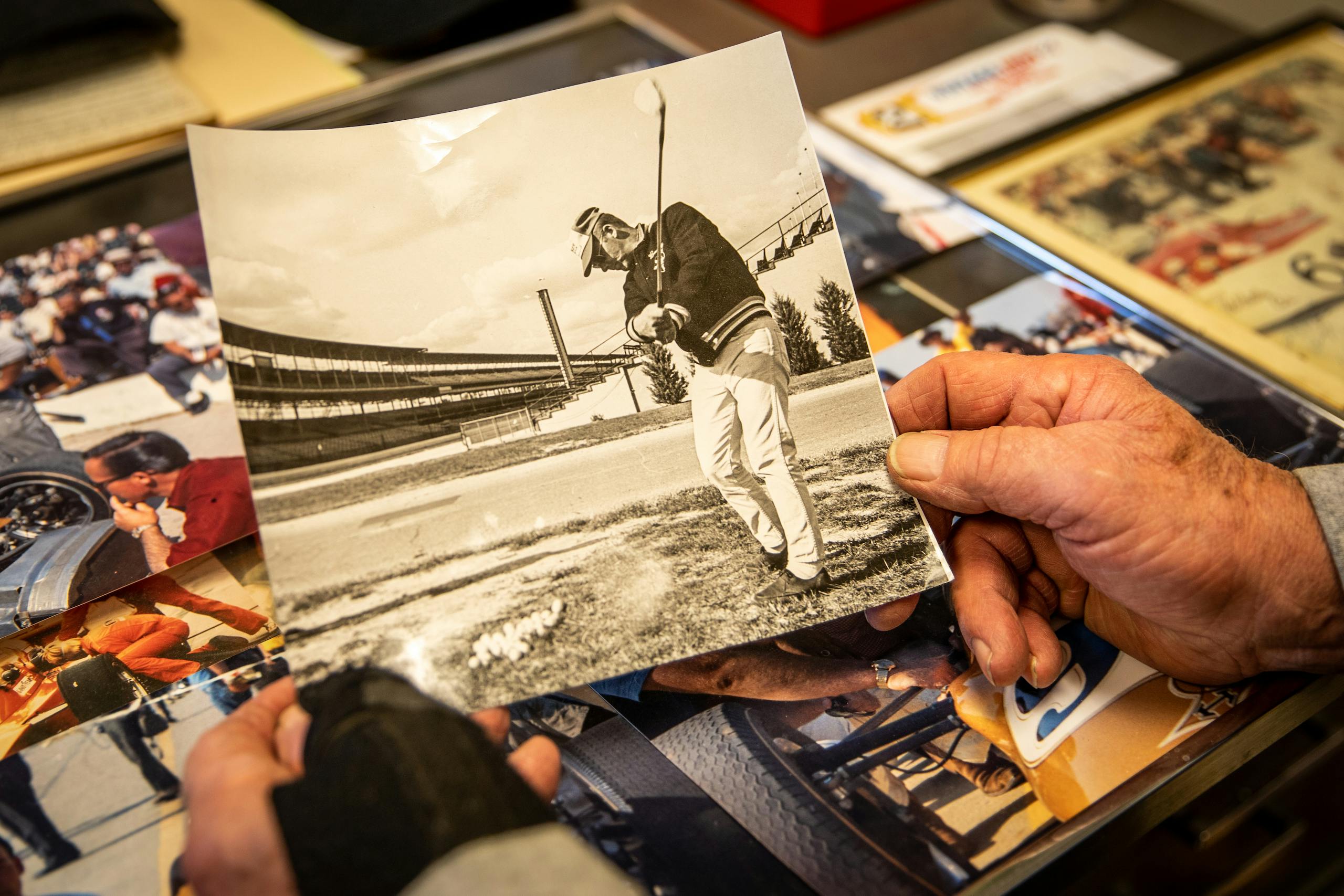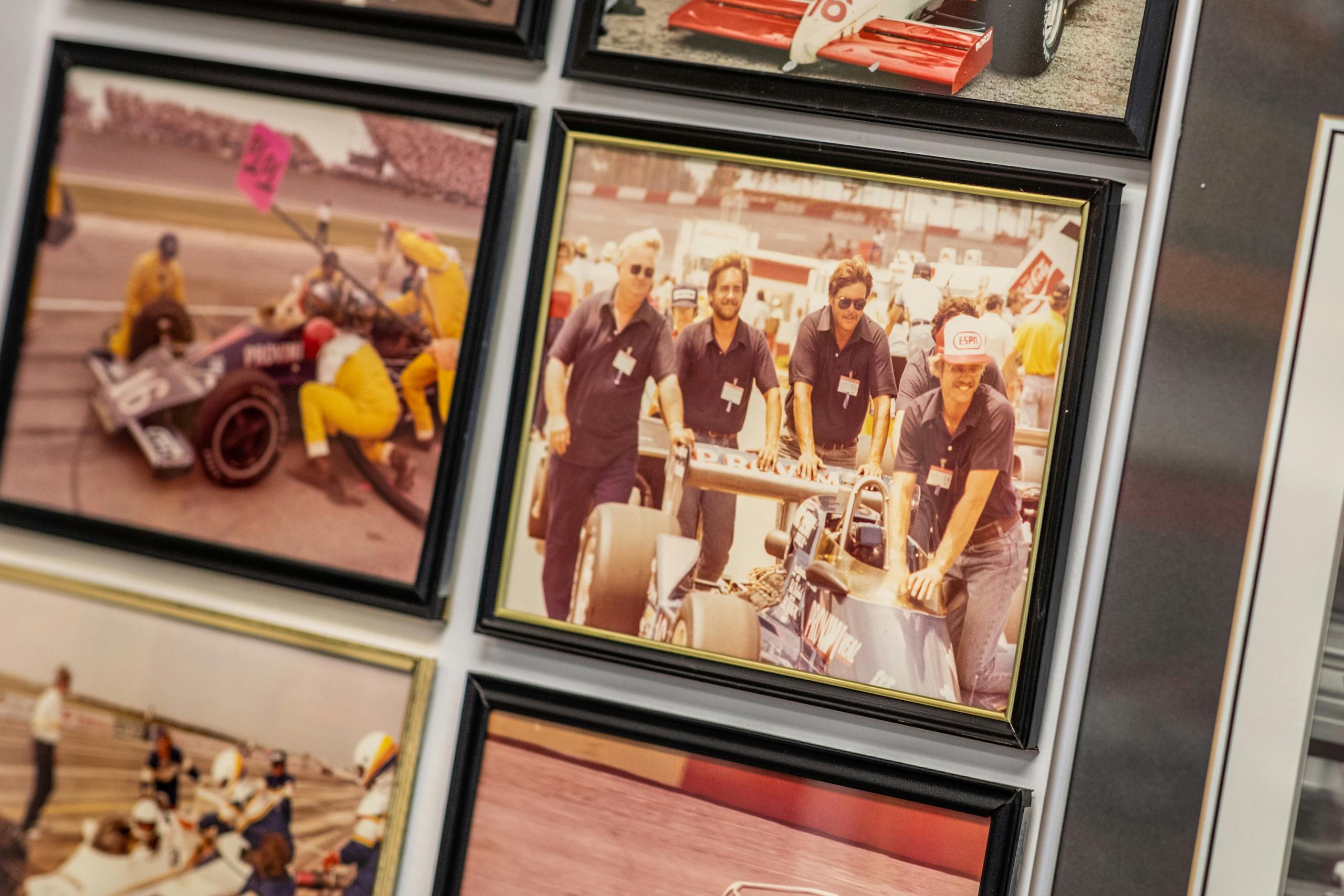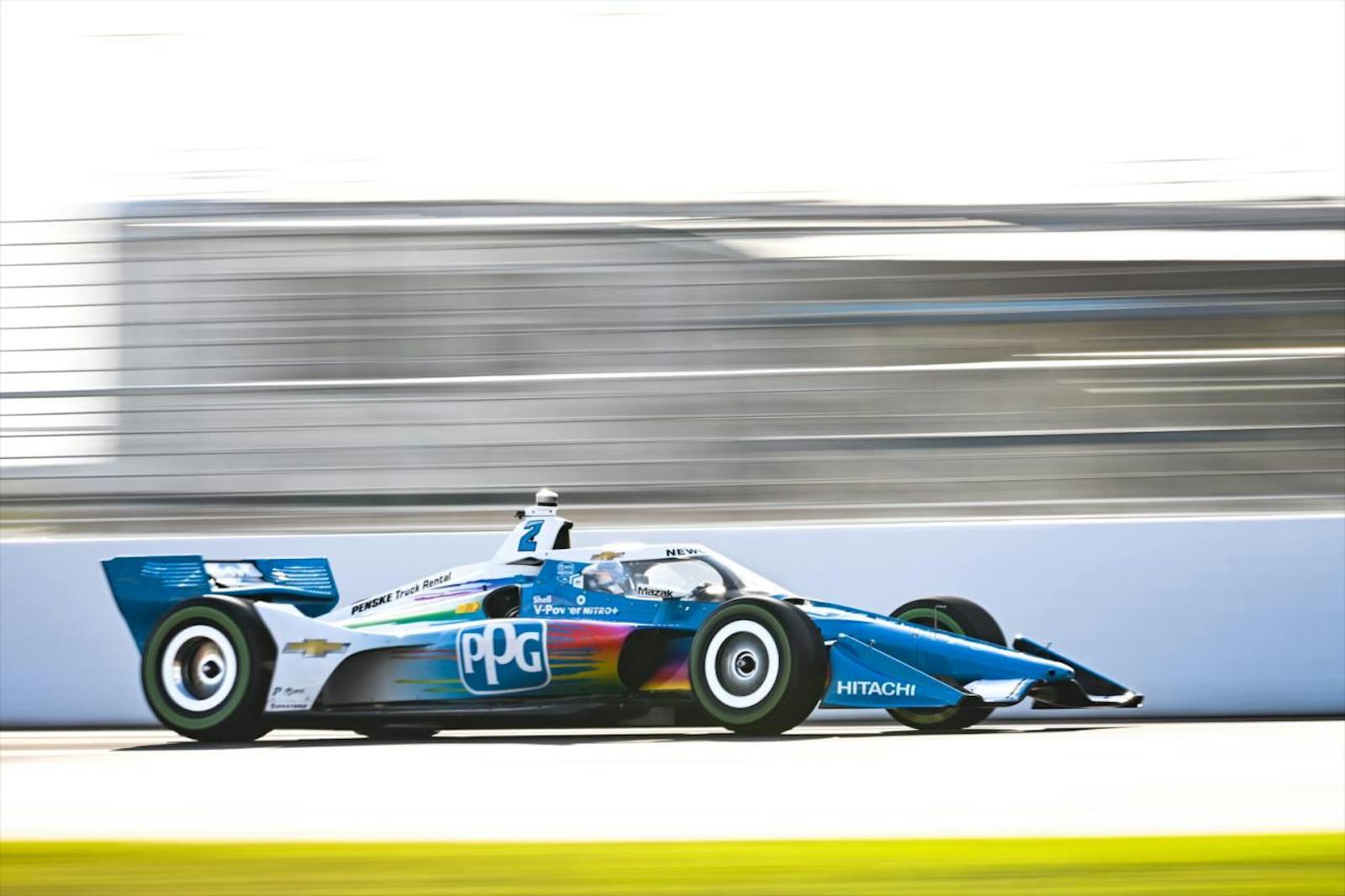Turn Four Restorations keeps Brickyard relics race-ready
From the Indianapolis Motor Speedway, take Crawfordsville Road northwest for 12 miles, and you’ll come to Brownsburg, population 27,000. The town is home to many of the nation’s greatest race teams, and in one network of gray offices and subtly labeled shop spaces lie the headquarters for the most recent Indy 500–winning team (Rahal Letterman Lanigan Racing), the Rolex 24 victors (Wayne Taylor Racing), and the NHRA Funny Car champs (Don Schumacher Racing). Tucked into this high-profile racing neighborhood, you’ll also find Rick Duman’s Turn Four Restorations.
The two-story shop currently houses 31 cars, and some, in two-story stacks, tickle the rafters. For a man who’s been hunched over the engine bays of race cars for more than five decades, Duman is light-footed as he moves about the place. He’s intimately familiar with each car in his possession: a prewar Miller, a 1960 Epperly roadster, a 1972 Gurney Eagle driven by Bobby Unser, Eddie Cheever’s Dallara, multiple McLarens—far too many open-wheel heroes to list, in various states of assembly or disassembly. Despite the large footprint and vast collection, Turn Four is remarkably tidy, with mise en place on stainless-steel workbenches under surgical white lights. Framed, faded photographs of Victory Lane celebrations adorn the pale white walls and hint at the lifetime Duman has spent in this world both racing and wrenching.
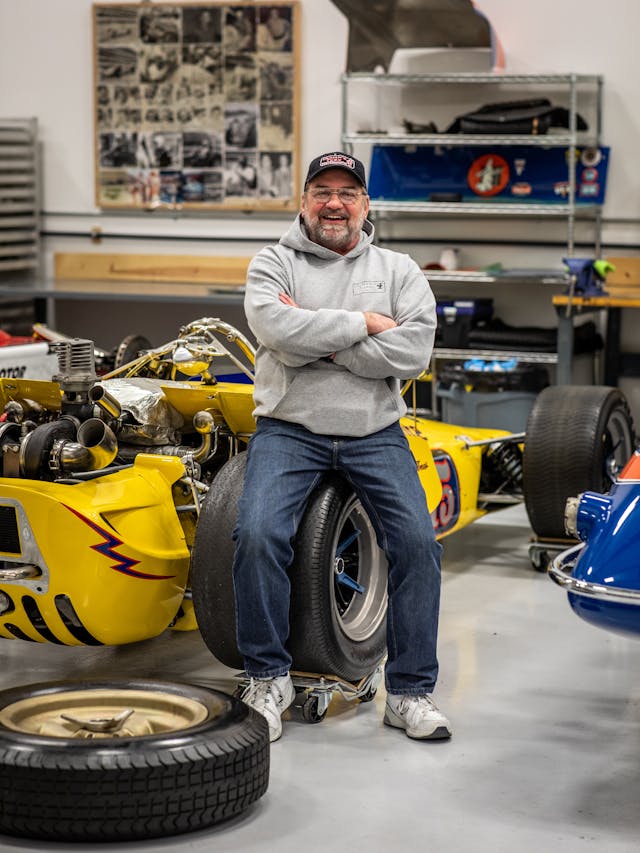
Duman grew up in the shadows of the Indianapolis Motor Speedway. Behind his childhood home at 25th and Georgetown, his father, Indy racer Ronnie Duman, built race cars out of his own shop. As a 15-year-old, Rick used to sneak into the track’s garages to help anyone willing to adopt an underage volunteer. “I would go in and clean, sweep floors, and polish cars,” says Duman. “I kept USAC tech happy, too.” Back then, officials were allowed to drink at the Speedway, but only after practices concluded. Every afternoon during those May practices, however, certain officials would find a spot obscured by the large wooden garage doors and Duman would slip them beers. In the ’60s, a young Duman tugged on the shirt cuffs of Indy’s giants. “Troy Ruttman gave me my first minibike,” he says, casually, like it was no big deal that the youngest winner of the Indy 500 remembered his birthday.
In 1968, Ronnie was killed in a crash at the Milwaukee Mile. Still, Rick decided to give racing a shot in the ’70s. It was a grind, and tough on the pocketbook. The young driver made a series of legitimate attempts at the grassroots level, but at the cost of his basic needs. “I was sitting in a house, 55 degrees, with my coat on, and I wasn’t really going anywhere, so I went back to work on race cars.”
Duman bounced from car to car, spinning wrenches for multiple mom-and-pop Indy teams, many of which built cars in Indy garages that they rented all year. “I worked for all of them, except Penske and Newman/Haas,” he says. “Back then, you could go to the Speedway and help anybody.” In 1992, he won CART’s esteemed George Bignotti Preparation Award, and in 2001, he became the lead mechanic for Chip Ganassi Racing.
Duman’s restoration career took hold when a couple of prolific race car collectors reached out to the accomplished mechanic with questions about vintage Indy cars. “I answered the phone and told the truth,” he says. Before long, the group agreed to a partnership, and Duman’s Turn Four Restorations was born.

It was Duman’s five decades of experience and familiarity that separated him from the numerous shops willing to bolt together old Indy relics for paying customers. “We worked on this stuff when it was new,” he says. In fact, many of the open-wheelers parked in Duman’s shop are old acquaintances, having spent time in his care when they roared around the 2.5-mile oval in anger. “Plus,” he adds, “we’re just damn good.” It’s the attention to detail, he argues. “The cars look better than they did back then. [A.J.] Watson never polished the tubs,” Duman says, motioning to a reflective monocoque, buffed within an inch of its life, leaning up against the back wall. “We do.”
Turn Four operates with only two full-time employees on staff. Next to Duman, Tim Whiting spends the most time in the shop. Whiting recently ran the IndyCar circuit, crewing on various teams as they trucked from shore to shore. Giving up a life on the road, Whiting traded suitcases for Supertanium and began working on vintage race cars, many much older than he. During my visit, Whiting stripped the brakes from a 1960 Lindsey Hopkins–owned Epperly open-wheeler. The sleek blue roadster, impossibly low slung (thanks to the Offenhauser four-cylinder mounted on its side), is a new addition.

“All of these cars are special,” Duman says, “but the Coyote, that was pretty much a basket case when we found it.” His crew finished restoration on A.J. Foyt’s Indy 500–winning Coyote back in 2018 and had it ripping around vintage exhibitions across the Midwest. Since its completion, the car regularly rolls back through the large bay door at Turn Four for service. Unlike the practice at many restoration shops, once a Duman project is finished, it is not cast out, never to be seen again. Instead, many of Turn Four’s restorations are year-round installations.
But don’t confuse Turn Four for some high-dollar toy box. New projects come and go with the same frequency as the repeat offenders. The morning after my visit, Duman trucked to Illinois to pick up a McLaren M24. A day later, he drove down to Louisiana to drag back another Gurney Eagle. Past the Speedway, up Crawfordsville Road, into Turn Four, where there’s work to be done.
